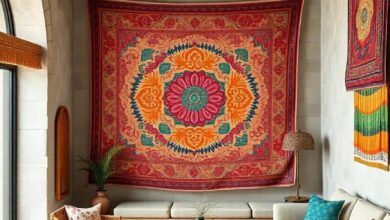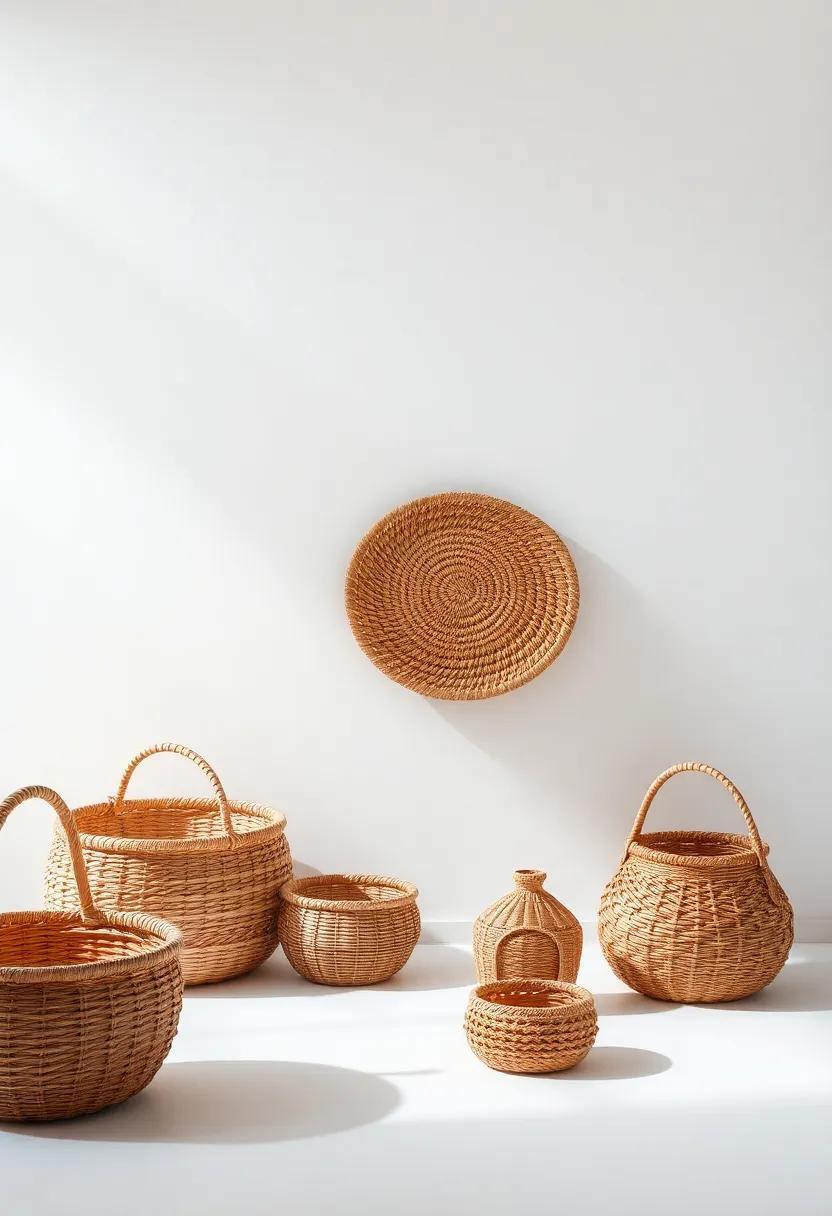
29 Unique Traditional South American Woven Baskets You Need to Know About
From the vibrant marketplaces of Peru to the serene landscapes of Ecuador, South America is a treasure trove of artisanal crafts that tell stories of culture, history, and creativity. Among these treasures are the exquisite woven baskets that have been meticulously crafted by skilled artisans for generations. In this listicle, we invite you to explore 29 unique traditional South American woven baskets, each one a testament to the rich heritage and diverse techniques of the region.
Weather you’re a collector, a craft enthusiast, or simply curious about the lovely creations that define South American culture, this guide will introduce you to a variety of styles, materials, and uses.Expect to discover the artistry behind each piece, the cultural meaning they hold, and how these stunning baskets can add a touch of authenticity to your home décor or serve as inspirational gifts. Join us on this colorful journey through labor-intensive techniques and the passionate stories woven into each basket, and find out why these unique creations deserve a place in your heart—and perhaps even your home.
“Wayuu Mochila: The Vibrant, Handcrafted Bags of the Indigenous Wayuu People”
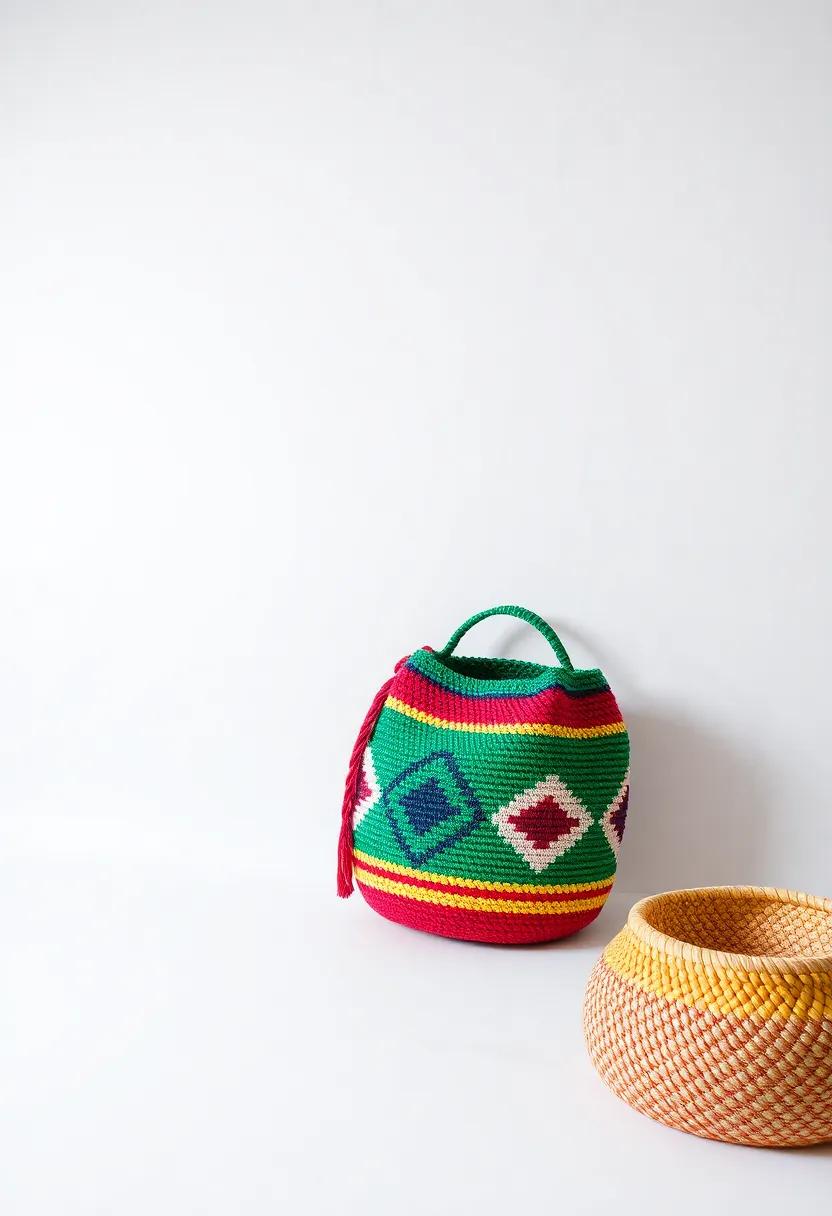
The vibrant Wayuu Mochila bags are a stunning reflection of the rich culture and traditions of the Wayuu people, a matriarchal indigenous group from the La Guajira region of Colombia and Venezuela. Each mochila is meticulously handcrafted using colorful acrylic yarn, showcasing intricate designs that are frequently enough inspired by the natural world and the unique stories of the artisans. The artistic patterns are not merely decorative; they hold deep meanings and represent the identity and heritage of the Wayuu community. The combination of bright colors and diverse motifs creates true works of art that stand out in any setting.
These bags are not only a feast for the eyes but are also practical and durable.Artisans use traditional crochet techniques to ensure each piece can withstand daily use, making them ideal for both fashionable accessorizing and functionality. Key features include:
- Handcrafted: Each mochila is unique, as no two bags are made alike.
- eco-friendly materials: Made primarily from sustainable resources.
- Cultural significance:** Represents stories and traditions passed down through generations.
“Pampa Basket: A simple Yet elegant Piece, Perfect for Everyday Use”
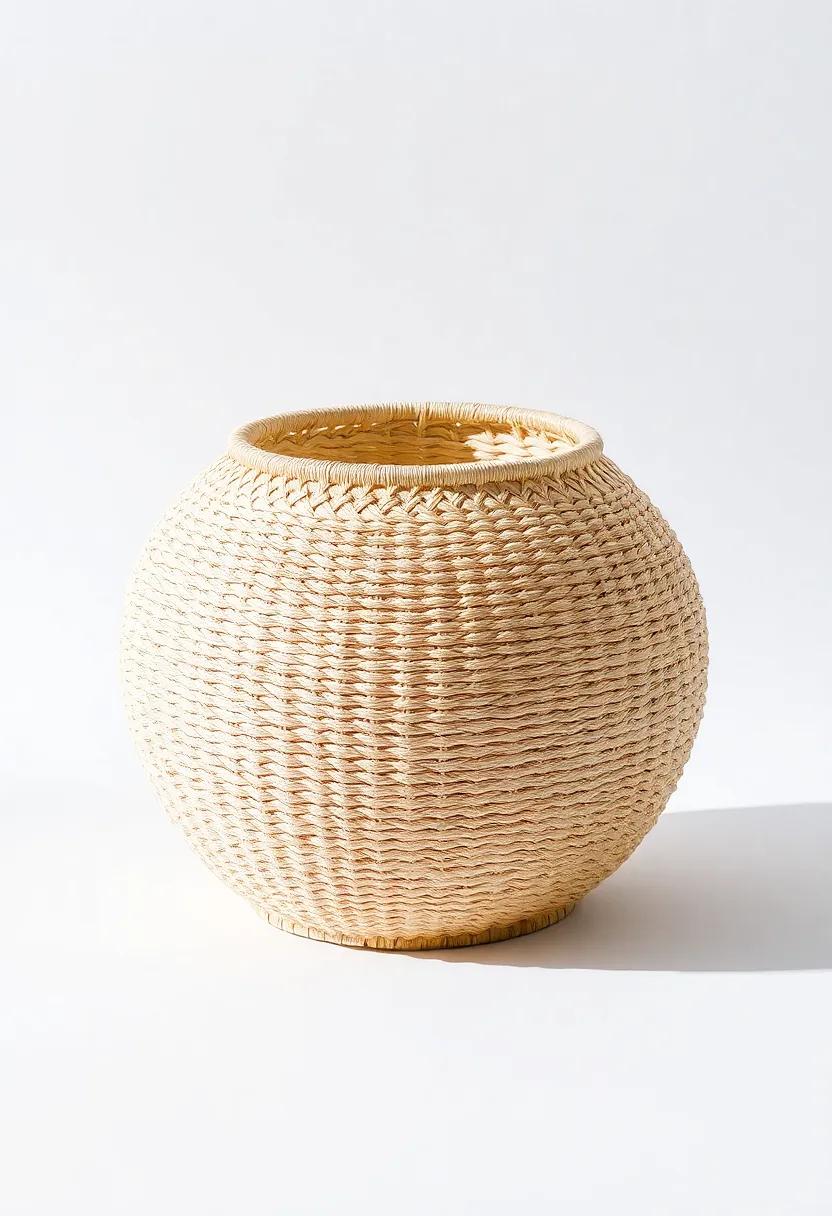
The Pampa Basket captures the essence of simplicity combined with elegance, making it an ideal choice for daily use. Handcrafted by skilled artisans, each piece reflects a deep-rooted tradition that celebrates South American heritage. With its versatile design, it can seamlessly blend into any surroundings, whether you’re organizing your living space or heading out for a picnic. The natural fibers used to weave these baskets not only ensure durability but also add a touch of rustic charm.
Functionality is at the heart of the Pampa Basket. Its spacious interior is perfect for a variety of items,from groceries to toys,while the lightweight structure makes it easy to carry. Additionally,these baskets come in an array of colors and patterns,offering something for every taste.Whether styled in a modern or traditional setting, the Pampa Basket stands out as a timeless piece, embodying the perfect fusion of artistry and practicality. Here’s a quick look at its key features:
| Feature | Description |
|---|---|
| Material | Natural fibers for sustainability and durability |
| Design | Simple yet elegant, suitable for various uses |
| Color Options | Diverse patterns and hues to match any decor |
| Weight | Lightweight for easy handling |
“Chiquita Basket: Colorful Designs and Intricate Patterns from Ecuador”
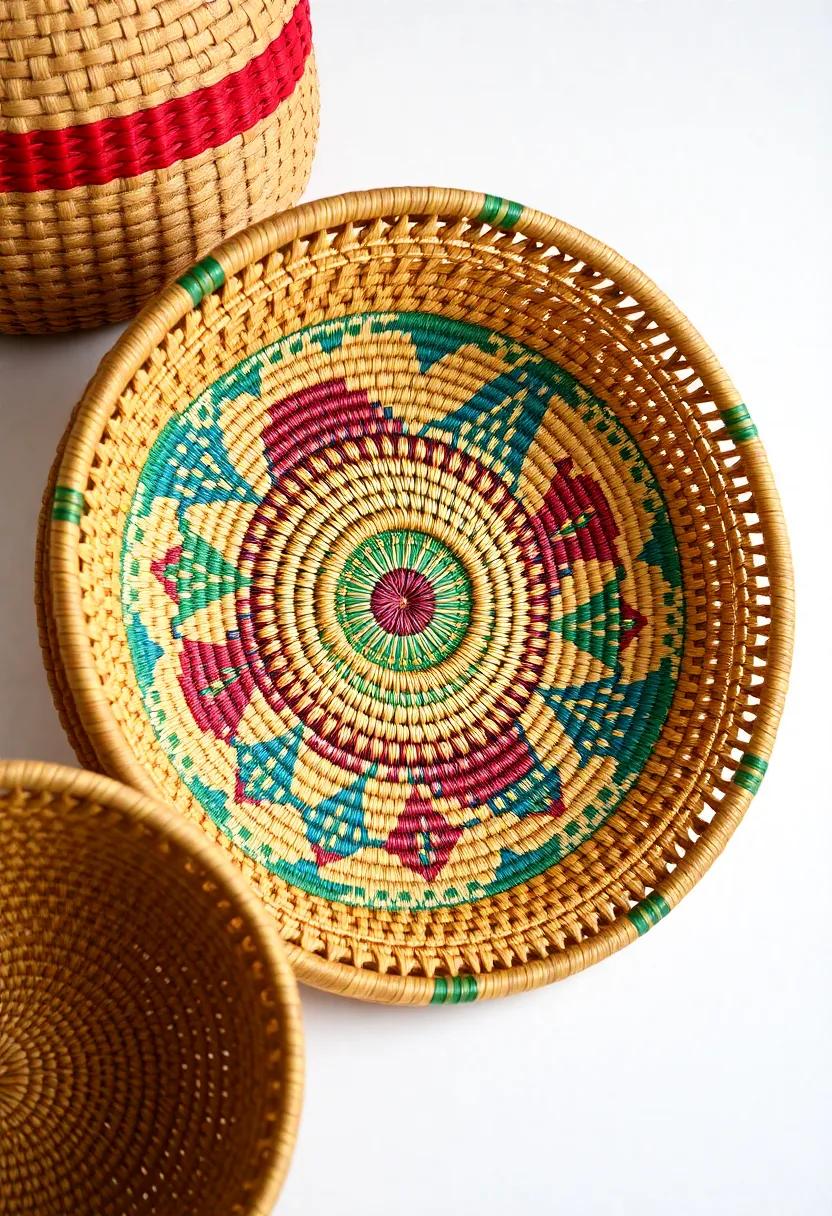
The artistry of Ecuadorian Chiquita baskets showcases a vibrant tapestry of colors and intricate design, deeply rooted in indigenous culture and craftsmanship. These woven treasures are often adorned with geometric patterns, floral motifs, and a stunning array of colors that reflect the breathtaking landscapes of Ecuador. Each basket is uniquely crafted using natural fibers, primarily the tule plant, which adds a soft texture and durability to the finished product. Artisans skillfully achieve complex designs by employing various weaving techniques, resulting in pieces that are as functional as they are beautiful.
When selecting a Chiquita basket, consider the size, color palette, and the specific patterns that appeal to you. Some popular styles include:
- Floral patterns: Evoking the lush,tropical surroundings of Ecuador.
- Animal motifs: Featuring local wildlife, from hummingbirds to llamas.
- Geometric designs: Showcasing a stunning interplay of shapes and colors.
These baskets not only serve as decoration but also make an excellent choice for eco-friendly storage solutions, bringing both style and sustainability into your home.
“Kuna Mola basket: A Unique Fusion of Textiles and woven Art from Panama”
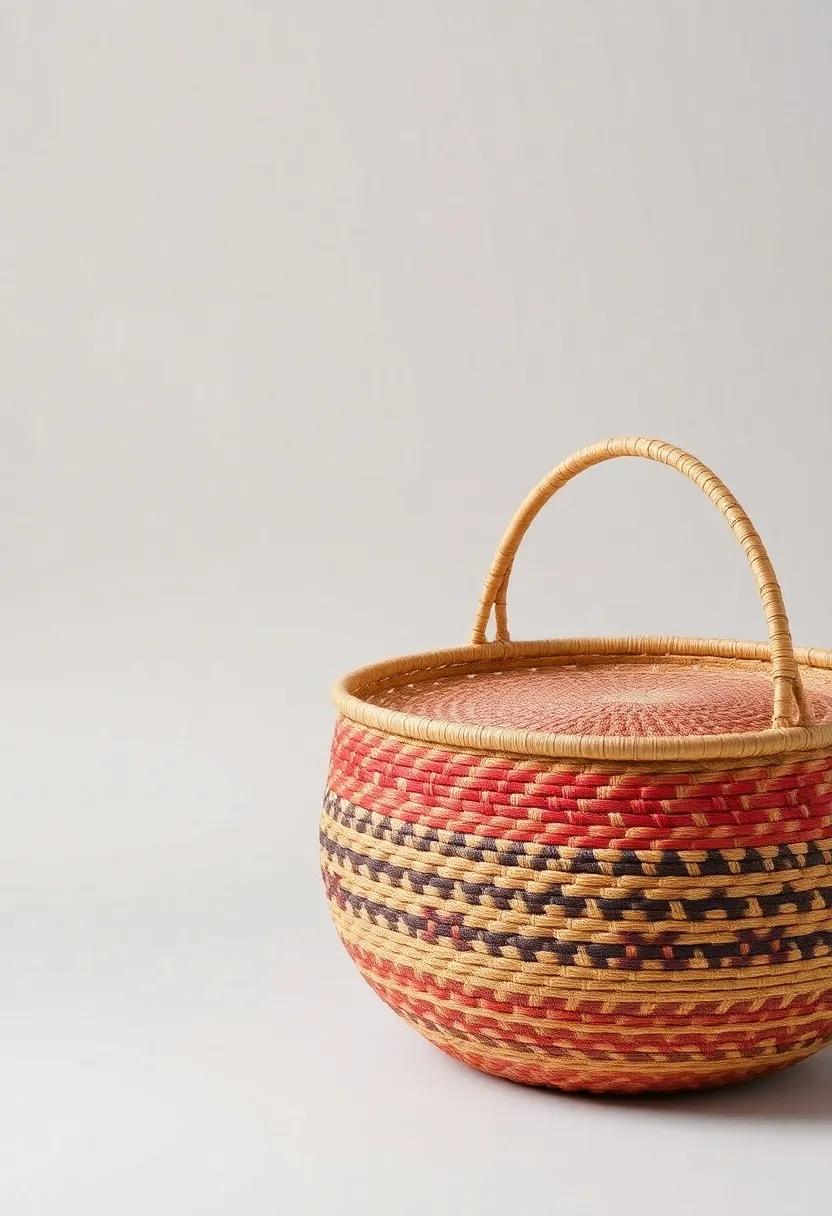
The Kuna Mola basket showcases an exquisite blend of traditional weaving techniques and vibrant textile art that hails from the indigenous Kuna people of Panama.These baskets are not just functional but are also a stunning depiction of the Kuna’s rich cultural heritage. Made primarily from natural fibers and adorned with colorful molas—which are intricate, embroidered panels depicting various motifs—these baskets capture a unique aesthetic that is both artistic and practical. The fusion of textile and woven art allows each basket to tell a story, often reflecting elements of nature, mythology, and daily life within the kuna community.
What sets Kuna Mola baskets apart is their meticulous craftsmanship and the creative use of contrast and symmetry in their designs. Each piece is handmade, which means no two baskets are exactly alike, adding to their charm and appeal. Typically, the baskets come in various sizes and shapes, suitable for purposes ranging from storage to decorative pieces in homes. Their vibrant colors, combined with the intricate patterns formed by the layered textiles, create a striking visual impact that attracts collectors and art enthusiasts alike. These baskets not only support the Kuna economy but also help preserve the unique cultural identity of Panama.
“Tz’utujil Basket: Traditional Guatemalan Craftsmanship with Rich Cultural Significance”
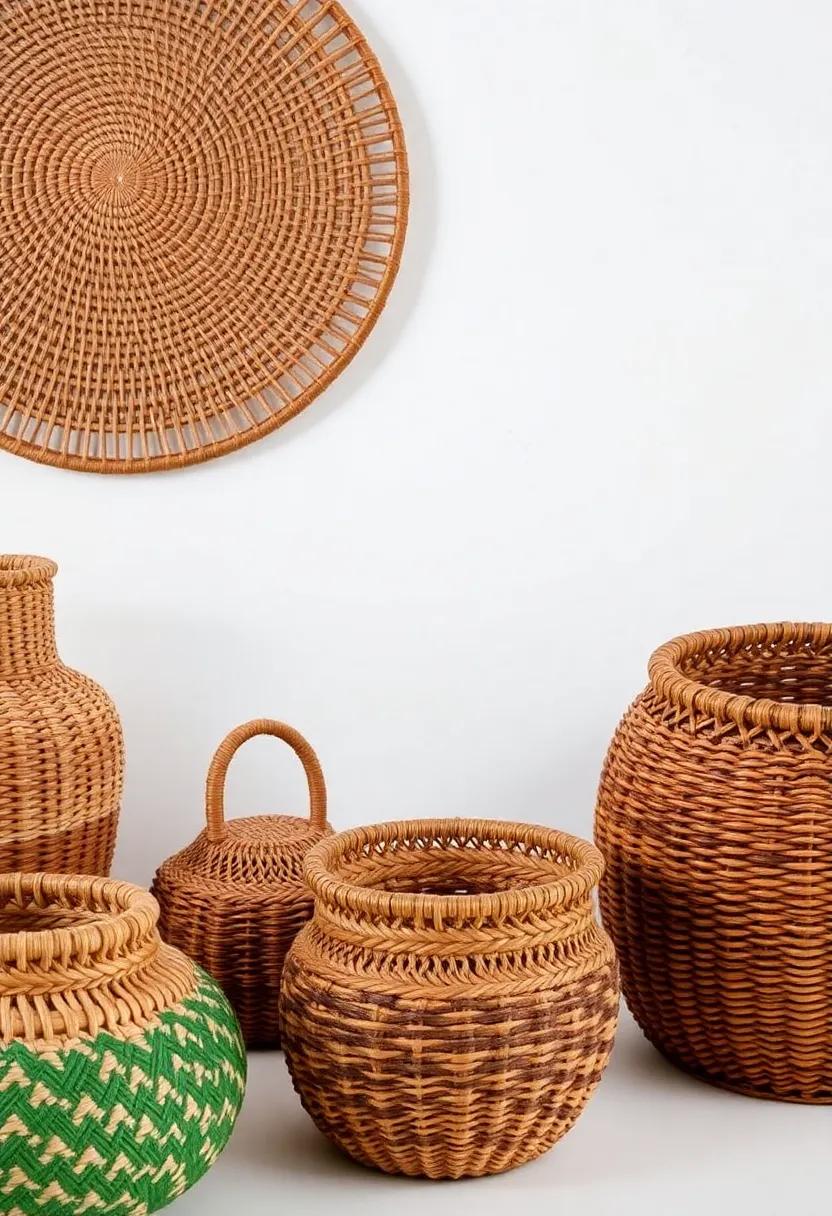
The Tz’utujil people of Guatemala are renowned for their vibrant and intricately woven baskets, a craft that transcends mere utility to reflect the rich cultural tapestry of their community. These baskets, typically crafted from local materials such as palm leaves and reeds, exhibit a unique blend of colors and patterns that tell stories of their ancestral heritage. Each piece is not just a functional item; it is a canvas on which artisans express their identity, beliefs, and the natural beauty surrounding them. Some common characteristics of Tz’utujil baskets include:
- Intricate Patterns: Designs often inspired by nature, symbolizing flora and fauna.
- Vibrant colors: Use of natural dyes derived from plants, ensuring rich hues.
- Durability: Skillful weaving techniques that enhance the longevity of the baskets.
additionally, these baskets serve varied functions within Tz’utujil society, from carrying food to being used in traditional ceremonies. Frequently enough passed down through generations, they embody not only artistry but also a deep-seated respect for cultural traditions and communal practices. The Tz’utujil artisans, predominantly women, invest a important amount of time and expertise into each creation. Here’s a simple comparison table illustrating the different types of Tz’utujil baskets:
| Type of Basket | Common Use | Materials Used |
|---|---|---|
| Shopping Basket | Carrying goods | Palm leaves, reeds |
| Decorative Basket | Home adornment | dyed fibers, natural materials |
| Ritual Basket | Ceremonial purposes | Handwoven from traditional materials |
“Tupi Basket: Elegant, Functional Wares from Brazil’s Indigenous Tribes”
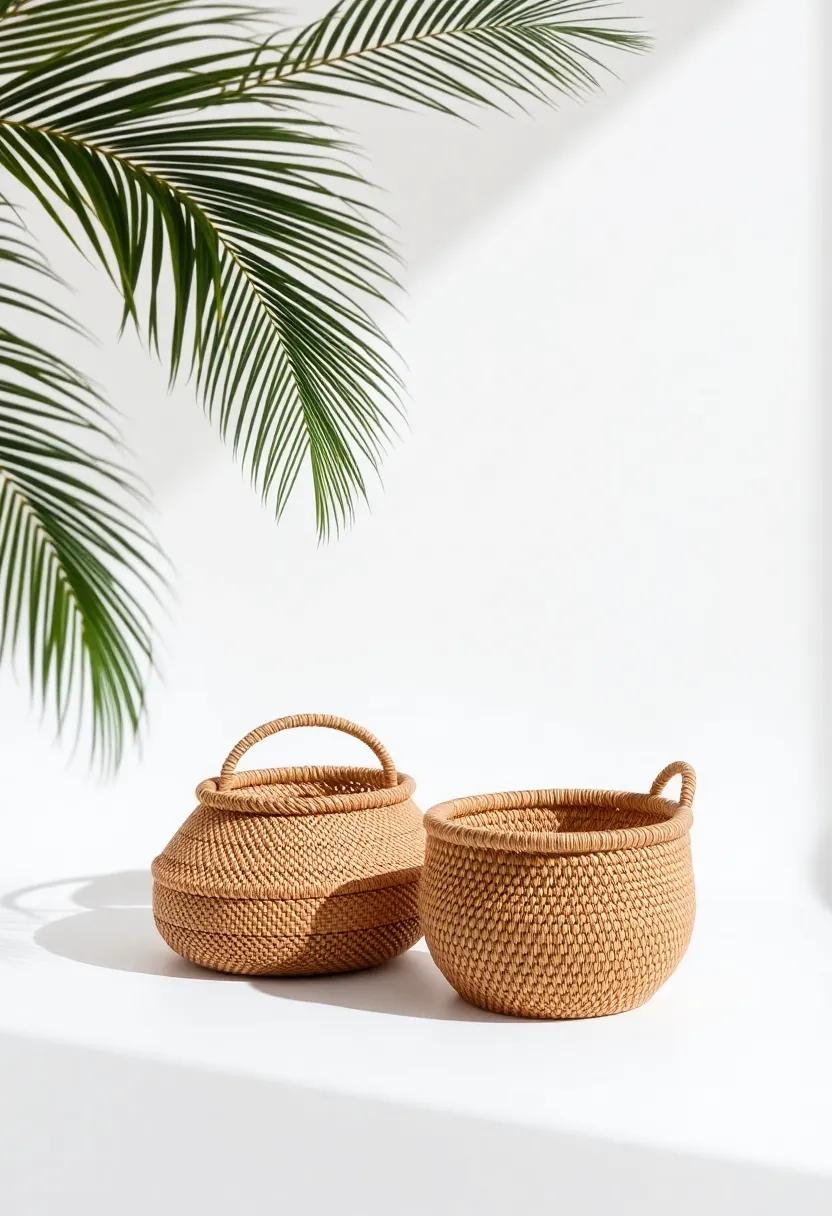
Crafted with meticulous skill by Brazil’s indigenous tribes, Tupi baskets embody a rich cultural heritage and a deep connection to nature.Each piece is woven from natural fibers, such as palm leaves and grasses, showcasing vibrant colors and intricate patterns that tell stories of the land and its people. These baskets serve both aesthetic and practical purposes, making them perfect for storage, decoration, or as thoughtful gifts that carry the essence of indigenous craftsmanship. The techniques used to create these baskets have been passed down through generations, ensuring that each work is not just an object, but a slice of history.
What sets tupi baskets apart is their elegant design,which blends functionality with artistic expression. Frequently enough adorned with geometric motifs, these baskets range from small, delicate containers ideal for holding jewelry to large, sturdy hampers perfect for laundry or decor. Here are some key features that make Tupi baskets a must-have:
- Eco-Friendly Materials: Made from sustainably sourced fibers.
- Handmade Quality: Each basket is a unique piece of art.
- Versatile Use: Ideal for various storage needs and home decor.
- Cultural Significance: Reflects the identity and traditions of indigenous tribes.
| Basket Size | Common Uses | Typical Colors |
|---|---|---|
| Small | Jewelry, Trinkets | Bright Reds, Greens |
| Medium | Storage, Gift Baskets | Earthy Tones |
| Large | laundry, Decorative display | Multi-Colored Patterns |
“Capixaba Basket: A Remarkable Fusion of Palm Fibers and Handwoven Designs”
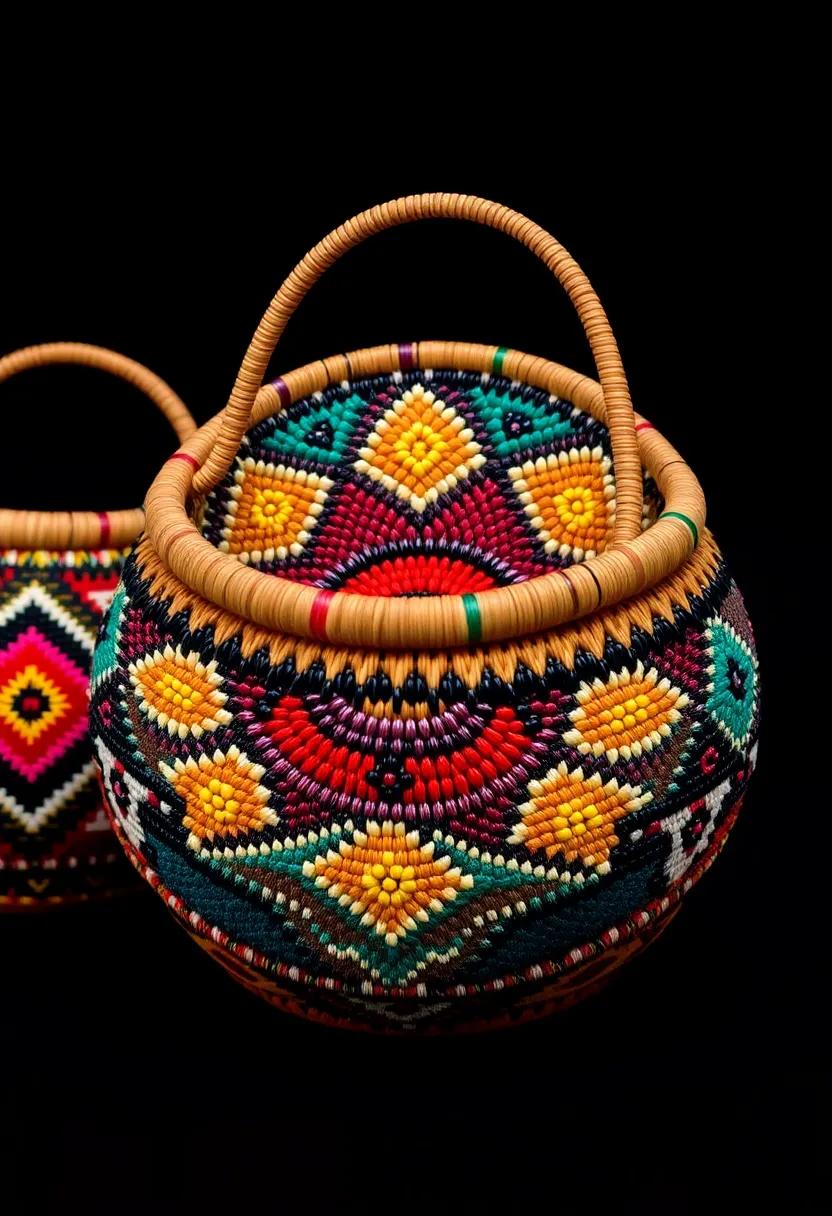
The Capixaba basket is a stunning example of traditional craftsmanship, originating from the vibrant region of Espírito Santo in Brazil. These unique baskets are woven using the durable fibers of the palmeira de babaçu, which not only gives them their characteristic strength but also imparts a slightly glossy finish that elevates their aesthetic appeal. Artisans combine these fibers with intricate handwoven patterns, often inspired by nature and local traditions, resulting in a visual tapestry that tells stories and preserves cultural heritage.Each piece is a labor of love, meticulously crafted to offer both functionality and beauty, making them desirable not only for practical use but also as striking decorative items.
One of the standout features of Capixaba baskets is their versatility. They come in various shapes and sizes, suitable for a multitude of purposes, such as:
- Storage: Perfect for organizing home essentials.
- Decor: Adding a rustic charm to any living space.
- Gifts: A thoughtful present that showcases artisanal skill.
In addition to their practicality, Capixaba baskets are frequently enough adorned with vibrant colors and intricate designs that reflect the natural beauty of the region. Whether you are looking to enhance your home décor or support sustainable craftsmanship,these woven treasures embody the essence of South american artistry.
“Mochica Basket: Reviving ancient Techniques from Peru’s Coastal Cultures”

Deeply rooted in the ancient traditions of Peru’s coastal cultures, the Mochica basket is a stunning example of indigenous craftsmanship that has transcended time. Crafted by the Moche people, these baskets are not just functional items but also exceptional works of art, highlighting the intricate designs that reflect their vibrant culture and history.The revival of these ancient techniques is a testament to the resilience of indigenous artisans, who are embracing their heritage while adapting to modern markets. Each Mochica basket often features geometric patterns, depictions of deities, and natural motifs that tell stories of their ancestors and their connection to the sea.
The process of creating a Mochica basket is an art form that requires skill and dedication. Artisans typically use materials such as totora reeds and native fibers,meticulously weaving them to create a sturdy yet beautifully intricate design.Some characteristics of Mochica baskets include:
- Colorful Dyes: Natural pigments derived from plants and minerals are used to add vibrant colors.
- Symbolism: Each pattern or color may represent different aspects of life, spirituality, or the natural world.
- Functionality: While they serve decorative purposes today, these baskets were originally used for storage and transportation.
Through workshops and community efforts, there is a renewed interest in preserving these techniques, ensuring that the tradition continues to thrive. Many modern artisans are now blending traditional Mochica styles with contemporary designs, creating unique pieces that appeal to today’s consumers while honoring their ancestral roots.This blend of old and new not only keeps the spirit of the Mochica basket alive but also serves as a reminder of the profound heritage found within South America’s rich tapestry of indigenous cultures.
“Aymara Basket: The Art of Weaving in the Highlands of Bolivia”
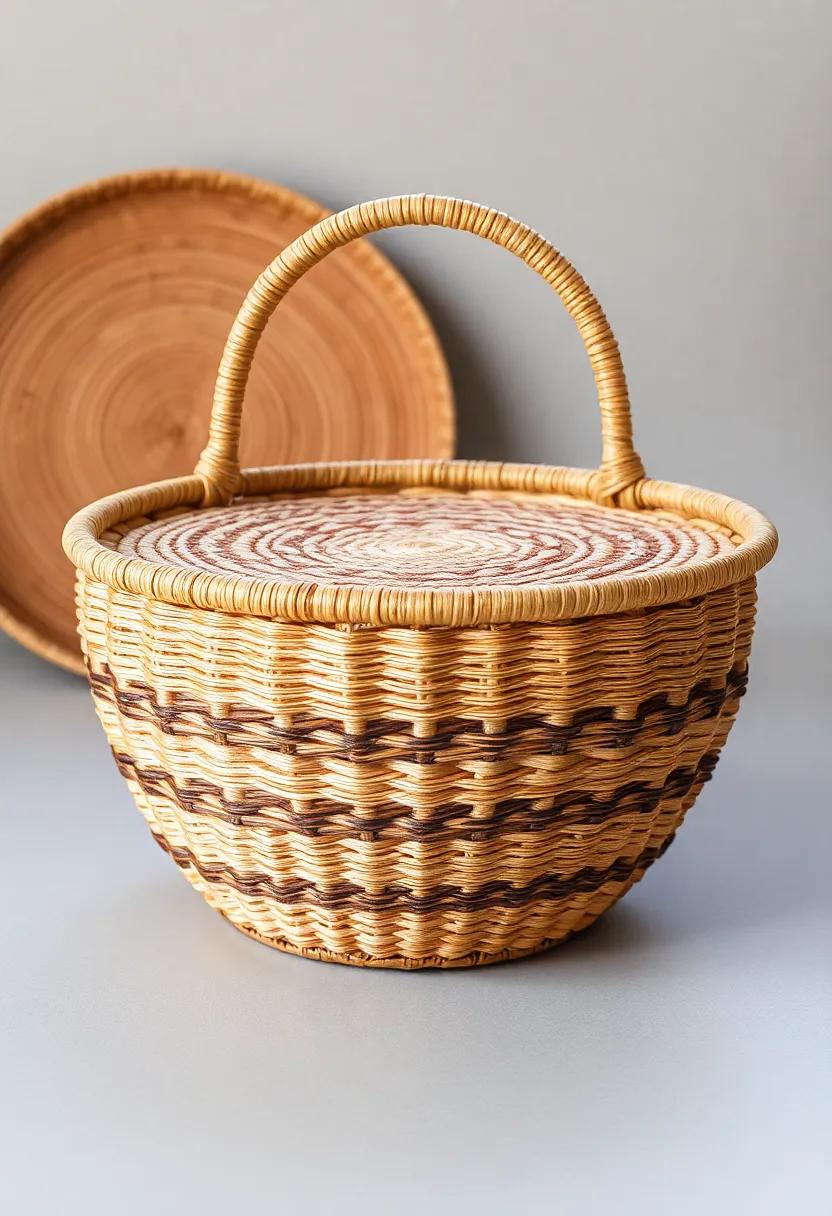
In the highlands of Bolivia, the Aymara people have perfected the ancient craft of basket weaving, creating stunning pieces that meld functionality with artistic expression. These baskets, frequently enough woven from local materials like ichu grass and cattail reeds, serve not only as practical items for daily use but also as cultural artifacts that tell stories of their makers. Each woven creation reflects the vibrant colors of the surrounding mountains and lake, embodying the deep connection between the Aymara and their stunning environment.
The weaving process is a communal activity,frequently enough passed down through generations,where knowledge and techniques are shared in lively gatherings. Baskets are traditionally adorned with intricate patterns and symbols that hold significant meaning, often representing natural elements or aspects of spirituality. Some notable styles include:
- Chuspa: A small pouch-like basket used for carrying coca leaves.
- Woven mats: Larger flat pieces utilized for various communal and ceremonial purposes.
- Decorative baskets: Ornately crafted to serve as centerpieces or gifts, showcasing intricate designs.
“Shipibo-Konibo Basket: Ethereal Patterns Inspired by Nature’s Designs in the Amazon”
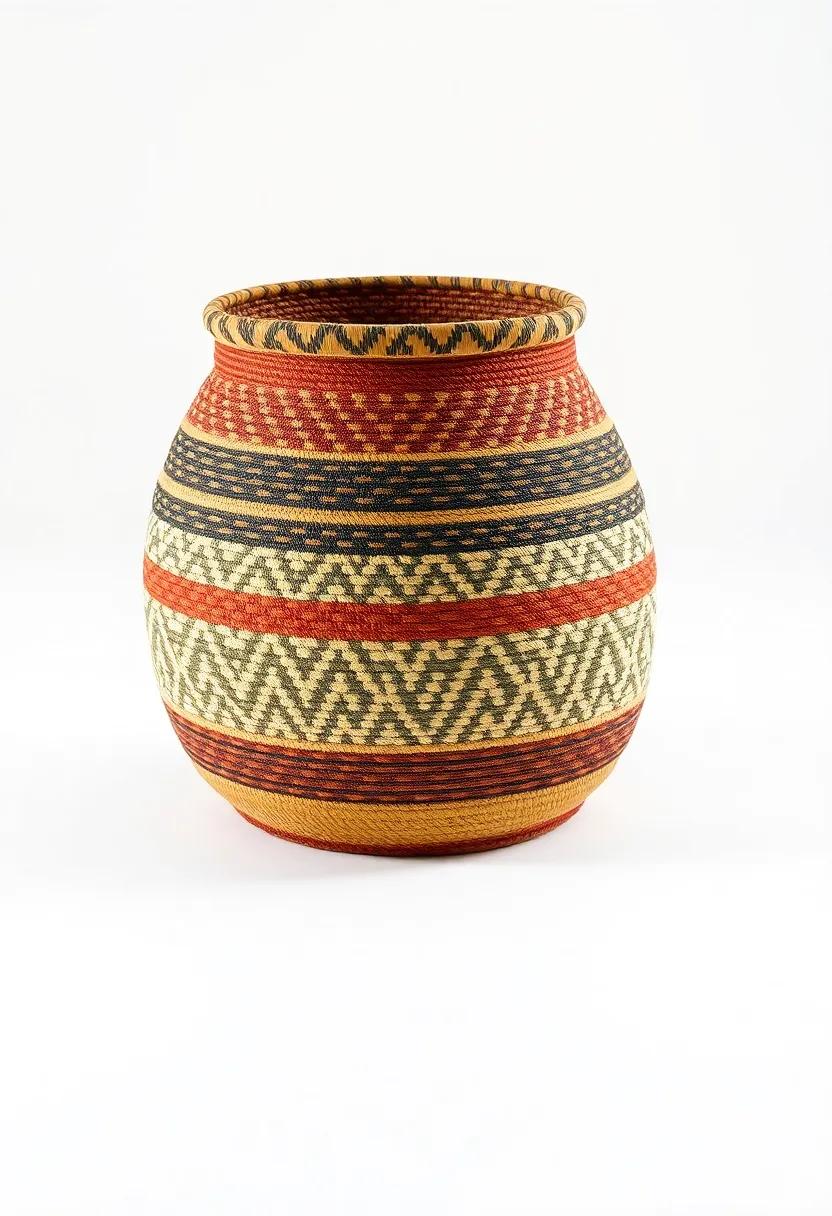
Among the myriad of woven treasures from South America, the Shipibo-Konibo basket stands out for its ethereal aesthetics and deep cultural significance. Originating from the Amazon rainforest, these baskets are not simply functional items but works of art that embody the essence of nature. Each basket is meticulously crafted using natural materials, such as palm fibers and cane, and showcases intricate patterns that are inspired by the vibrant flora and fauna surrounding the artisans’ communities. The designs frequently enough mirror the visions experienced during traditional ayahuasca ceremonies,linking the physical world with the spiritual realm in a breathtaking display of creativity.
The patterns found in Shipibo-Konibo baskets are a reflection of the artisans’ intimate connection with their environment.Frequently characterized by geometric shapes and symmetrical designs, these motifs can be symbolic representations of nature’s cycles or stories passed down through generations. The color palette is typically earthy,featuring shades of green,brown,and ochre,which pays homage to the lush Amazon landscape. The following table illustrates some key features that make these baskets distinct:
| Feature | Description |
|---|---|
| Materials Used | Natural fibers from palm and cane |
| Design Inspiration | flora, fauna, and spiritual visions |
| Color Palette | Earthy tones reflecting the Amazon environment |
| Artisan Techniques | Hand-woven and traditionally crafted |
“Cañari Basket: An Endearing Display of Ecuadorian Heritage and Artistry”
The Cañari basket, a captivating emblem of Ecuador’s rich artistic heritage, showcases the intricate craftsmanship of the Cañari people. Originating from the highlands of Ecuador, these baskets are much more than mere functional items; they embody stories of tradition passed down through generations. Crafted from local grasses and fibers, the baskets exhibit an incredible range of colors and patterns, often inspired by the natural surroundings and cultural motifs of the region. The artistry involved in creating each basket is labor-intensive, requiring the weaver to not only possess technical skill but also a deep understanding of the cultural significance behind each design.
In terms of design, Cañari baskets feature geometric shapes, animal motifs, and symbolic imagery that resonate deeply with the Cañari worldview. The vibrant colors are achieved using natural dyes derived from plants, which hint at the region’s biodiversity. Weaving techniques showcase a blend of practicality and artistry, making each piece unique. Whether used in daily life or as decorative items, Cañari baskets stand as a testament to the enduring spirit of Ecuadorian craftsmanship, inviting admirers to appreciate the blend of form and function in each lovingly woven piece.
“Kichwa Community Baskets: Sustainability and Tradition in a Single weave”
The Kichwa community of the Amazon rainforest has long been celebrated for their intricate basket weaving skills, which are not only artistic expressions but also essential to their sustainable lifestyle. Using materials sourced directly from their natural environment—such as palm fronds, grasses, and vines—these artisans create beautifully crafted baskets that are both functional and symbolic. The weaving techniques are passed down through generations, marrying traditional craftsmanship with the rich cultural narratives of the Kichwa people. Each basket tells a story, often depicting motifs that represent their connection to nature and ancestral traditions.
These baskets serve multiple purposes, ranging from practical storage solutions to ceremonial offerings, all while promoting sustainability. Kichwa weavers employ eco-friendly practices,ensuring that their craft does not harm the delicate ecosystems of the rainforest. Some key features of Kichwa community baskets include:
- Durability: Made from robust natural fibers, these baskets are built to last.
- Versatility: They can be used for harvesting, cooking, or as decorative items.
- Cultural significance: Each piece often embodies stories and symbols important to the Kichwa identity.
| Feature | Description |
|---|---|
| Materials | Natural fibers from the rainforest |
| colors | Inspired by nature, often earthy tones |
| Techniques | Traditional weaving techniques developed over generations |
“Yuracaré Basket: Functional Art from Bolivia’s Indigenous Forest Dwellers”
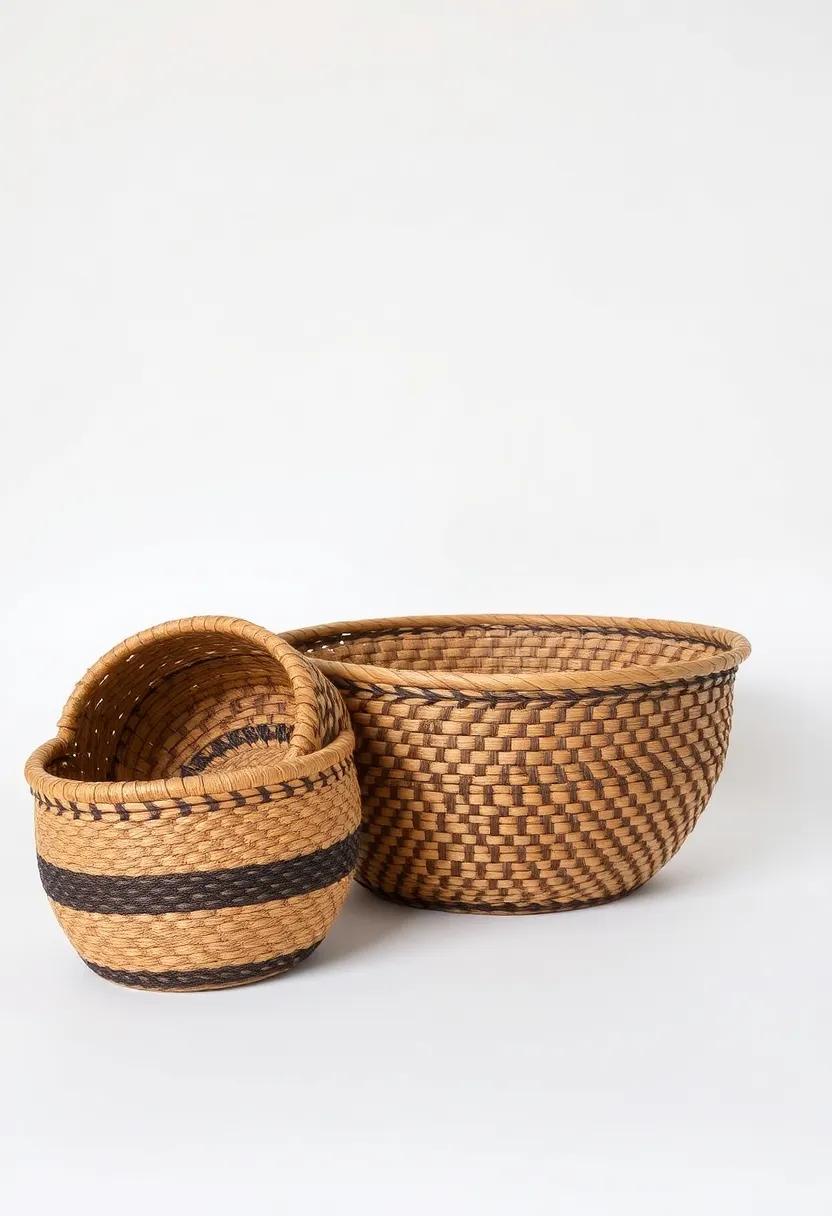
The Yuracaré basket, crafted by the indigenous Yuracaré people of Bolivia, exemplifies the intersection of functionality and artistry in traditional weaving. These baskets are not just containers; they hold cultural significance and reflect the deep connection between the Yuracaré community and their lush forest habitat. Made from natural materials such as jungle vines, palm leaves, and bamboo, each basket showcases intricate patterns that narrate stories passed down through generations. The skillful use of color and texture in the weaving process transforms these everyday objects into vibrant pieces of art, suitable for both practical use and decorative display.
Yuracaré baskets come in various shapes and sizes, serving multiple purposes in daily life. Common uses include:
- Storage: Ideal for keeping food or personal items organized.
- Decoration: Brightly colored and patterned baskets are often used to adorn homes.
- Gifts: Handmade baskets make thoughtful presents,symbolizing sustainability and cultural heritage.
Moreover, these baskets are typically produced with sustainability in mind—using materials sourced responsibly from their environment. This connection to nature not only serves practical functions but also advocates for ecological preservation, making the Yuracaré basket a beautiful representation of living art.
“Chongoroi Basket: The Heritage of Peru’s Pre-Columbian Cultures in Every Stitch”
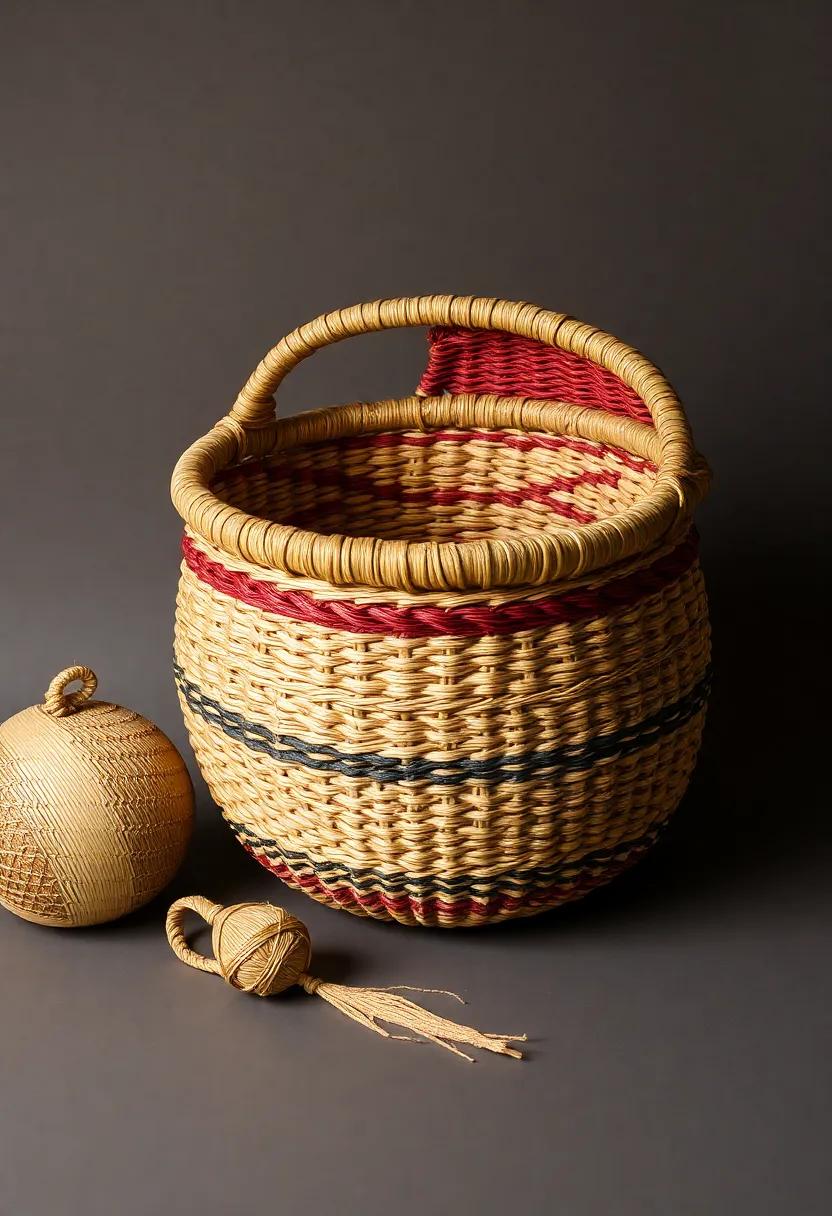
Originating from the Andean foothills of Peru, the Chongoroi basket is a stunning representation of the intricate craftsmanship of pre-Columbian cultures. These baskets, woven from natural fibers, reflect a rich heritage passed down through generations, showcasing the artisans’ deep connection to their environment and cultural identity. Each Chongoroi basket is not just a functional item; it embodies stories, traditions, and an artistic expression that is both unique and deeply rooted in the essence of Peruvian history.
Characterized by their vibrant colors and detailed patterns,Chongoroi baskets are made using techniques that have stood the test of time. The artisans employ a variety of weaving styles, which often include motifs that symbolize nature, fertility, and community. Some notable features of these baskets include:
- Natural Fibers: Crafted from materials such as straw, palm, and cotton.
- Symbolic Designs: Each pattern holds cultural significance and often tells a story.
- Functional Art: Designed for everyday use, blending utility with beauty.
To further illustrate the richness of Chongoroi baskets, consider the following table showcasing some key characteristics:
| Characteristic | Description |
|---|---|
| Origin | Andean regions of Peru |
| Materials | Natural fibers like straw and palm |
| Artistic Techniques | Traditional weaving passed down over generations |
| Cultural Significance | Patterns reflect ancestral stories and symbolism |
The craftsmanship of Chongoroi baskets is celebrated not just for its aesthetic beauty, but also for the preservation of traditions that define a community’s identity. As global interest in sustainable and artisanal products grows, these baskets are becoming cherished items for collectors and are increasingly recognized as an essential part of South American heritage.
“Wasso Basket: Timeless Designs from brazil’s Native Peoples, Blending Tradition with Modernity”
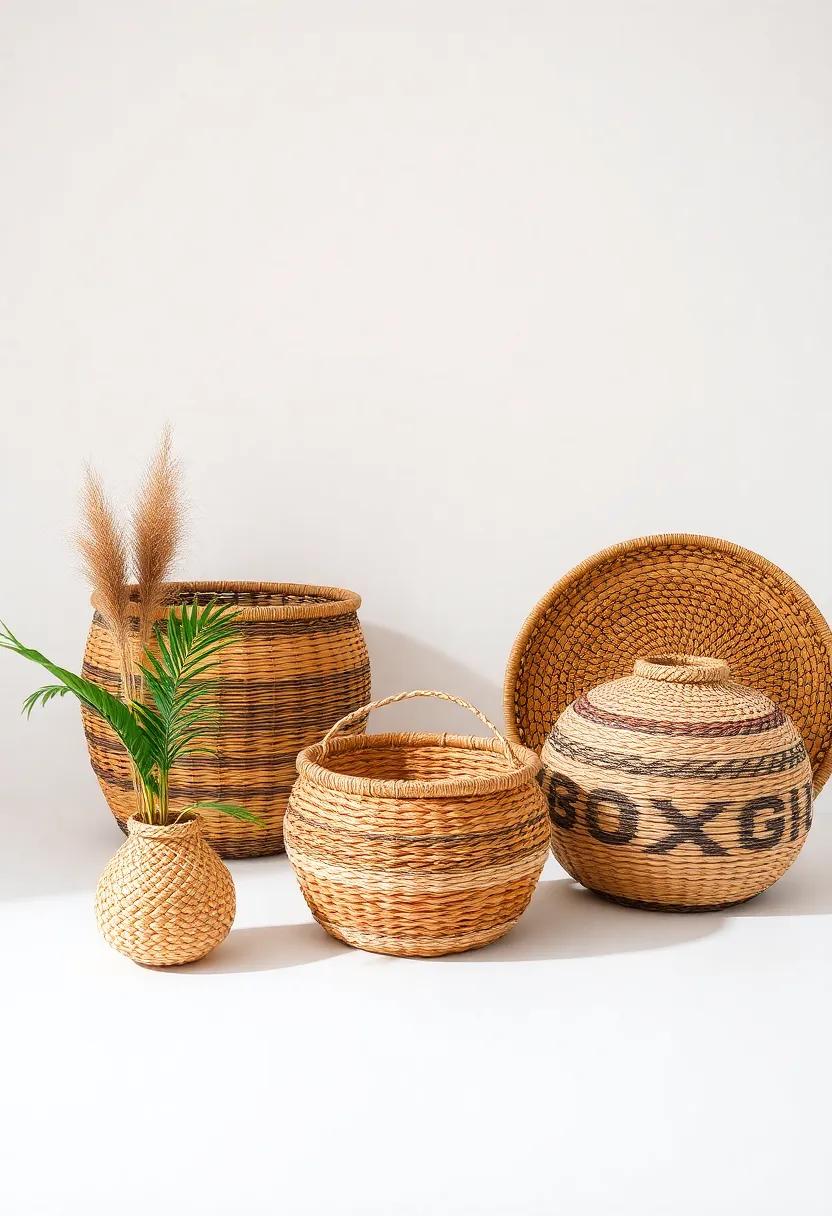
The Wasso basket is an exceptional representation of Brazil’s indigenous artistry, encapsulating the essence of ancestral knowledge intertwined with contemporary aesthetics. Each basket is handwoven by skilled artisans from native communities, using traditional techniques that have been passed down through generations. The intricate patterns and vibrant colors reflect the rich cultural heritage of Brazil’s diverse tribes, showcasing elements that tell stories of nature, spirituality, and everyday life. Crafted from natural fibers such as buriti palm and coir, these baskets are both durable and eco-friendly, making them an ideal blend of art and functionality.
What sets Wasso baskets apart is their adaptability to modern design trends while honoring their roots. As interior spaces lean towards organic materials and artisanal touches, these baskets find their way into contemporary homes, enriching decor with a touch of authenticity. Distinctive features such as a variety of shapes—from round to elongated—allow them to serve multiple purposes, including storage, decor, or serving bowls. Here are some key highlights of Wasso baskets:
| Feature | Description |
|---|---|
| Materials | Buriti palm, coir, and other natural fibers |
| design | Handwoven, vibrant patterns, eco-friendly |
| Uses | Storage, decor, serving, gifts |
| Origin | Brazil’s indigenous communities, rich heritage |
“Palha de São João Basket: Unique Texture and Patterns from Northeastern Brazil”
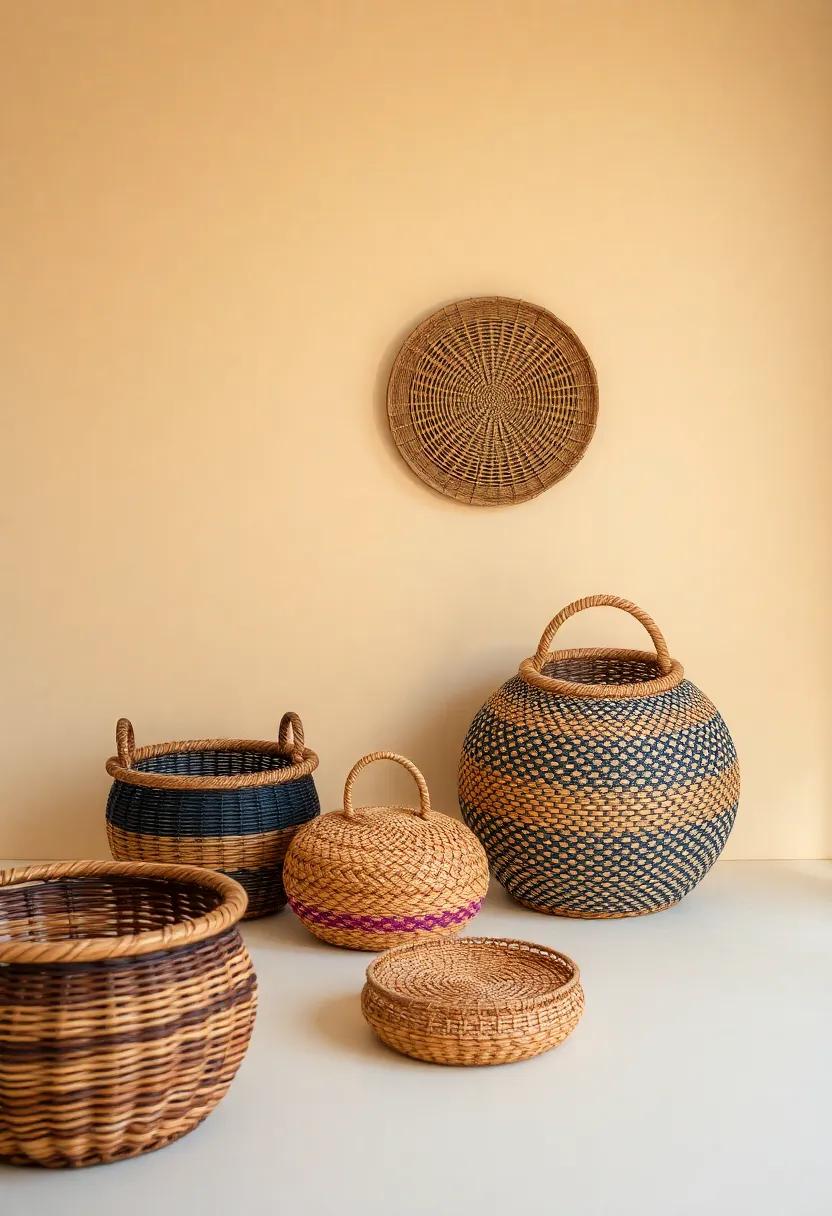
The Palha de São joão basket stands out as a vibrant emblem of grassroots craftsmanship from the arid landscapes of Northeastern Brazil. Made from the dried leaves of the corn plant, this unique basket marries functionality with artistry, showcasing an astounding range of textures and patterns. The weavers of these baskets frequently enough draw inspiration from their surroundings, resulting in a kaleidoscope of colors and shapes that reflect the rich cultural tapestry of Brazil.
Each Palha de São João basket tells its own story, woven together by hands skilled in the art of basket-making. The intricate motifs often include:
- Geometric shapes that symbolize nature
- Floral designs inspired by local flora
- Cultural symbols that honor local traditions
These baskets not only serve as practical storage solutions but also as captivating decorative pieces. In markets and artisan shops, you’ll find sizes ranging from small trinket holders to large storage baskets, each crafted with precision and passion, making them a must-have for any admirer of traditional art forms.
“Sambaqui Basket: Crafting History with Conch Shells and Traditional weaves”
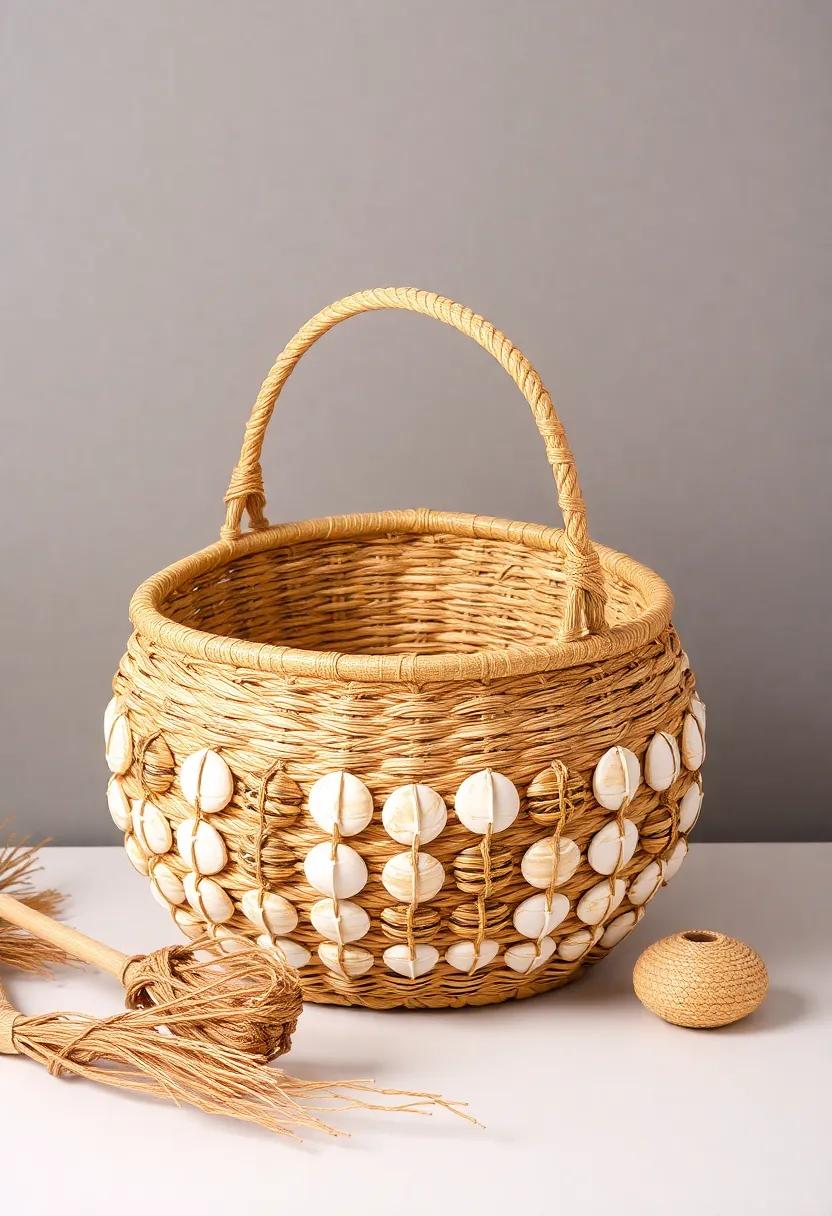
the Sambaqui basket represents a unique intersection of artistry and history, utilizing conch shells and traditional weaving techniques that have been passed down through generations. These baskets, often crafted by indigenous communities in Brazil, reflect rich cultural narratives that are intricately woven into their designs. The incorporation of conch shells—collected from coastal regions—adds a distinctive flair, not only in aesthetics but also in utility, as the hard shells are sometimes used as tools in the crafting process. The meticulous weaving skills employed in these baskets showcase a blend of natural materials and the artistic expression of the weavers, frequently enough resulting in intricate patterns that tell stories of their makers’ heritage and environment.
Crafted with a deep respect for tradition, these baskets are not merely functional items but also serve as representations of cultural identity. Each sambaqui basket is frequently enough adorned with colors and textures that celebrate local flora and fauna, embodying the ecosystems from which they originate. The process of weaving involves not only technical skill but also a profound understanding of the materials. common elements in these baskets include:
- Natural fibers: Sourced from local plants, giving the baskets their structural integrity.
- Shell embellishments: Used to enhance beauty and symbolize aspects of the community’s spirit.
- Patterns and motifs: Frequently enough representing mythology, spirituality, or the natural world.
“Judeo-Portuguese Baskets: The Unique Synthesis of Two Rich Cultures in Brazil”
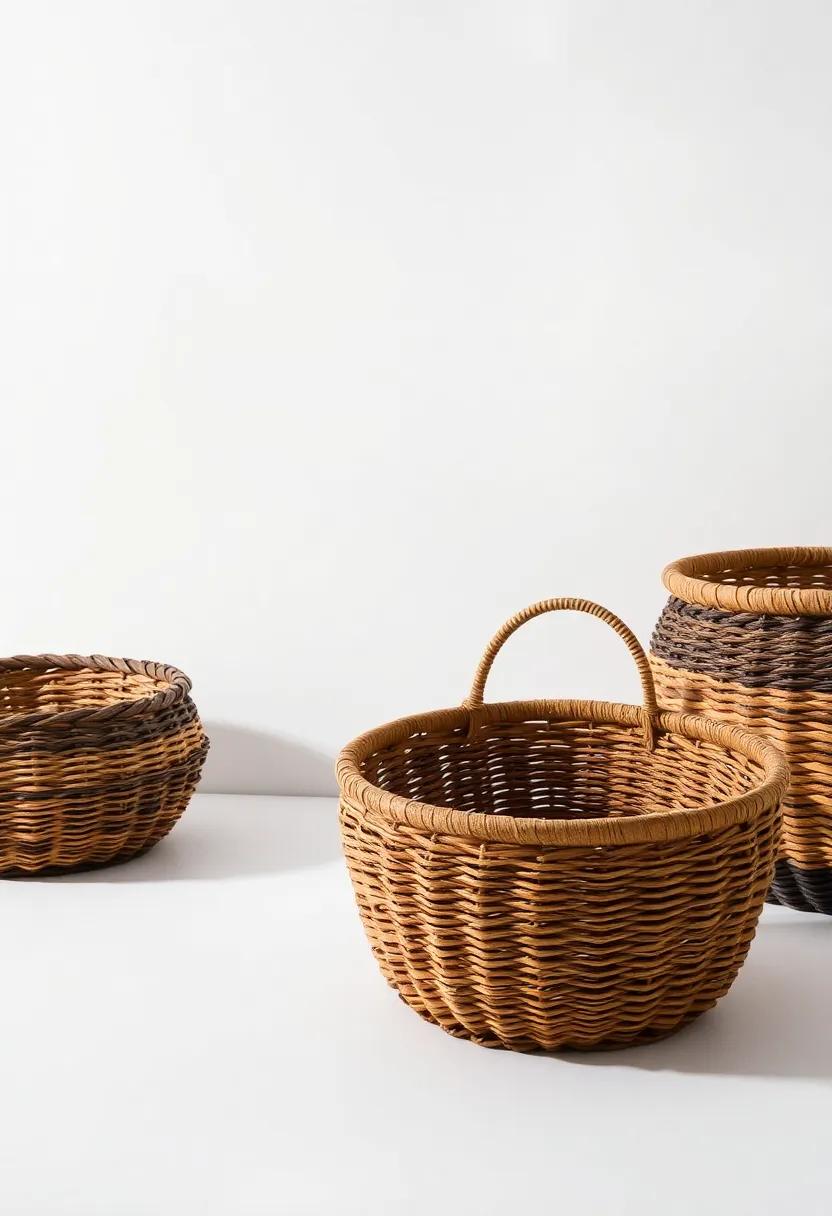
In brazil,the art of basket weaving has evolved into a remarkable expression of cultural fusion,particularly seen in Judeo-Portuguese baskets. These baskets beautifully embody the blending of Jewish and Portuguese traditions that thrived in the 16th century, during the height of the Inquisition. Craftsmen, frequently enough of Sephardic descent, combined their ancestral weaving techniques with local materials, resulting in intricately designed pieces that not only serve practical purposes but also tell a story of resilience and heritage. The use of natural fibers such as straw, palm leaves, and sisal showcases the region’s biodiversity, all while enriching the aesthetic with vibrant dyed patterns reflective of both cultures.
The patterns and motifs of these woven treasures are steeped in symbolic meaning, frequently enough featuring geometric shapes and nature-inspired designs. Artisans frequently employ traditional techniques like coiling and twining, ensuring that each piece is crafted with care and precision. The divergence from typical South American basketry allows the judeo-Portuguese baskets to stand out, merging the functional with the ornamental. Here are some characteristics that define these unique creations:
- Materials Used: Straw,palm leaves,and sisal fibers.
- Design Inspiration: Geometric patterns, floral motifs, and symbols of Judaism.
- Craft Techniques: Coiling, twining, and intricate weaving methods.
- Color Palettes: Natural earth tones enhanced with vibrant dyes.
“Q’echwa Textile Baskets: Craftsmanship Passed Down Through Generations in Peru”
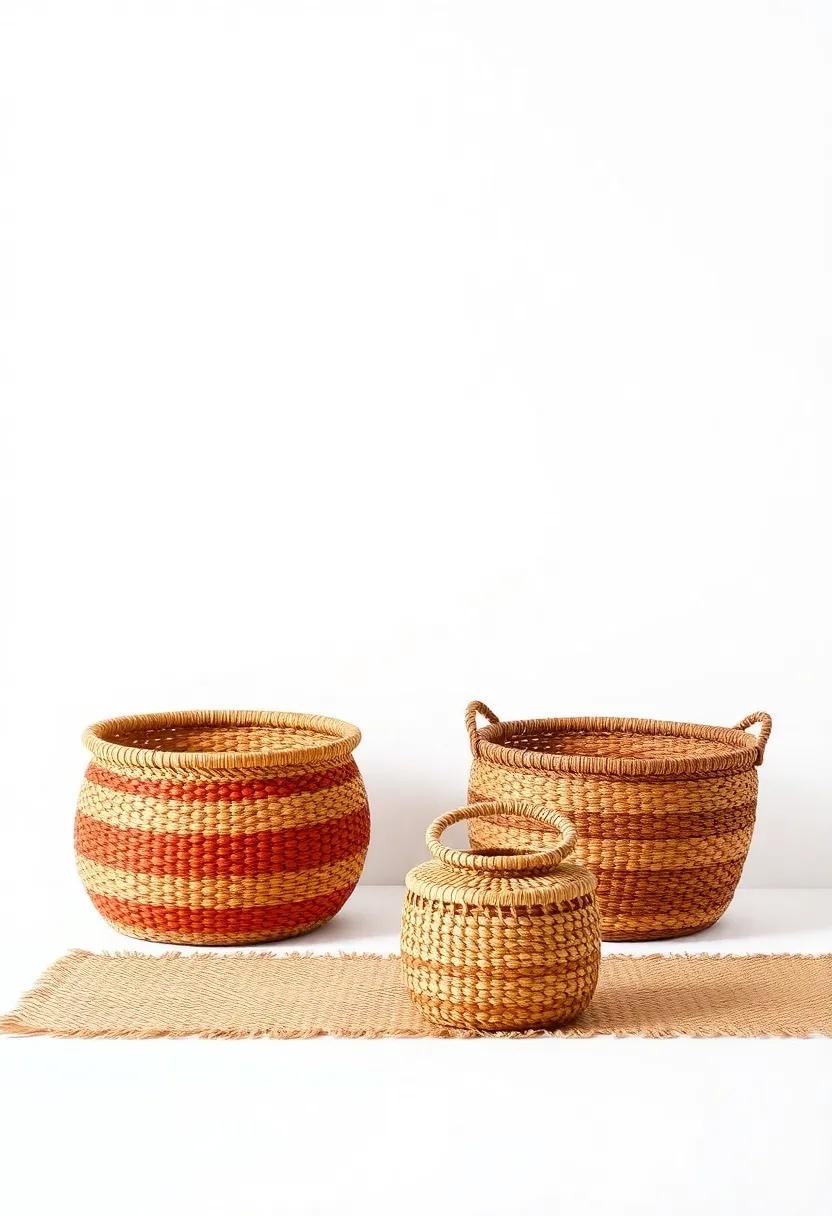
Q’echwa Textile Baskets: Craftsmanship Passed Down Through Generations in Peru
The vibrant world of Q’echwa textile baskets is a testament to the rich cultural heritage of the Andean regions of Peru. Crafted by the dedicated hands of indigenous artisans, these baskets showcase an intricate weaving technique that has been lovingly preserved for centuries. Each piece is not merely a utility item but a story woven from the threads of history and tradition. The artisans utilize natural materials such as reed, grass, and wool, often dyed with organic colors extracted from local plants, creating visually stunning pieces that are as functional as they are beautiful.
What sets these baskets apart is the unique artistry reflecting the Q’echwa identity. Each design is a blend of traditional patterns and personal flair, frequently enough depicting the stunning landscapes and vibrant cultural motifs of the peruvian highlands. Local communities engage in this artisanal heritage,promoting sustainability by ensuring that their practices support the environment and their economic well-being. Some key features of Q’echwa baskets include:
- Eco-friendly Materials: Made from natural, sustainable resources.
- Distinctive Patterns: Each basket tells a story through its designs.
- Community Craftsmanship: Produced collectively by indigenous groups.
| Basket Type | Usage | Symbolism |
|---|---|---|
| Apachito | General storage and decoration | Connection to cultural roots |
| chaki | Food and fruit basket | Nourishment and abundance |
| Wik’u | Gathering and carrying | Community togetherness |
“Mapuche Basket: Incorporating Traditional Weaving Techniques with Contemporary Aesthetics”
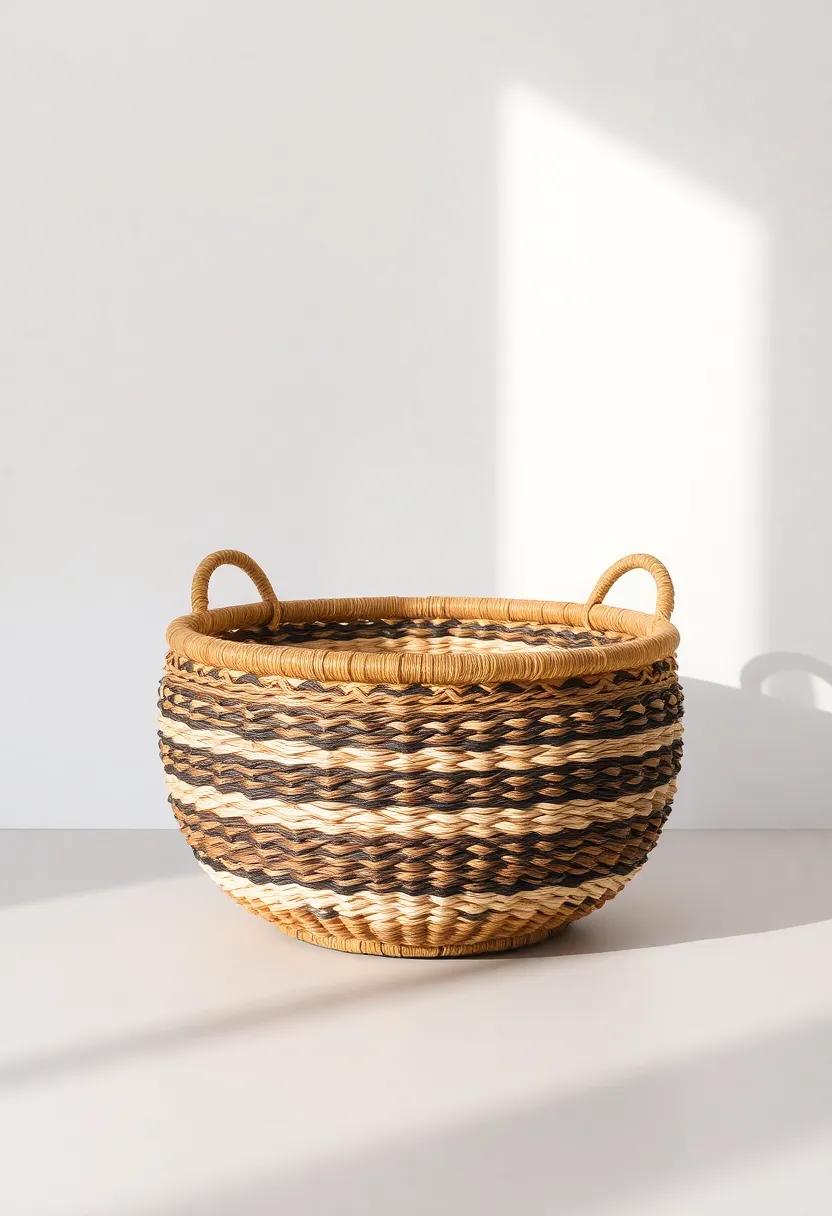
The Mapuche people, indigenous to Chile and Argentina, have a rich history of weaving that beautifully marries tradition with innovation. Their baskets are not just functional items; they embody cultural significance and artistry. The technique involves intricate weaving patterns passed down through generations, frequently enough utilizing natural materials such as coir, grasses, and reeds.Recent artists have taken these traditional methods and integrated them with modern aesthetics, resulting in pieces that are striking in their appearance and purpose. Typical designs blend vibrant colors and dynamic shapes, reflecting contemporary design sensibilities while honoring ancestral practices.
Contemporary Mapuche baskets flood the market with style and sustainability in mind, appealing to eco-conscious consumers. Artists now explore various sizes and forms, producing everything from trendy home decor pieces to practical storage solutions. Here’s a glimpse of what makes these baskets unique:
- Versatile Usage: Ideal for decorative displays or practical storage.
- Eye-Catching Colors: Use of natural dyes enhances visual appeal.
- Cultural Symbolism: Each design carries a story or significance.
| Design Element | description |
|---|---|
| Patterns | Geometric shapes representing the Mapuche worldview. |
| Material | Local plants and fibers ensure sustainability. |
| Functionality | Serves both decorative and practical use. |
“Nacho baskets: Delightful and Versatile Pieces from Peru’s High Plateaus”
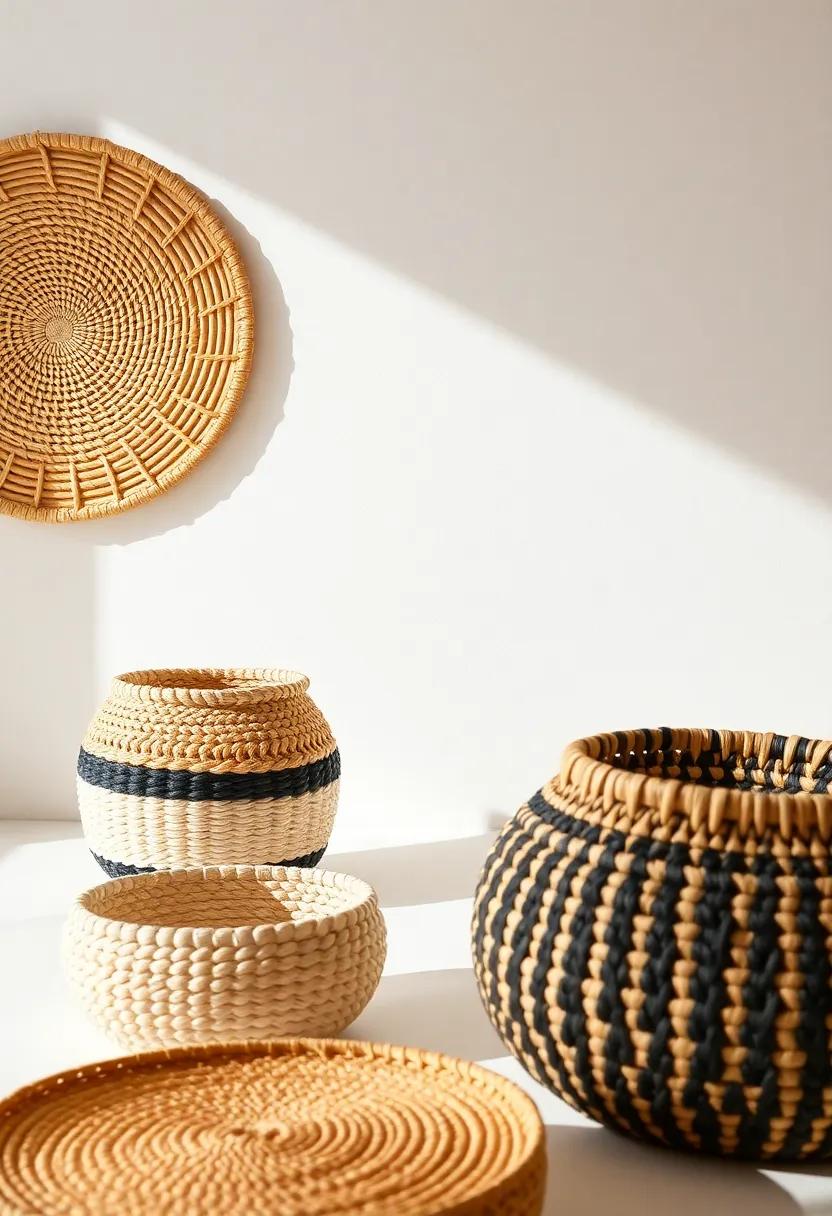
the breathtaking Nacho Baskets, handcrafted by skilled artisans from Peru’s high plateaus, epitomize the rich cultural heritage and vibrant artistry of Andean communities. These baskets are not only practical for storing household items but also serve as an exquisite piece of decor that brightens any space. Made using age-old weaving techniques, each basket is adorned with intricate patterns and vibrant colors that reflect the stunning landscapes and diverse flora of the Andes. Whether you use them for organizing your living room or as charming gift containers, they embody the spirit and tradition of Peruvian craftsmanship.
What sets Nacho Baskets apart is their remarkable versatility. Here are some fascinating uses that showcase their adaptability:
- Home Decor: Use them as eye-catching centerpieces or plant holders.
- Storage Solutions: Perfect for toys, crafts, or even pantry essentials.
- Gift Baskets: Fill with goodies for a personalized touch on special occasions.
- Event decor: Enhance your weddings or parties with these unique decorative pieces.
| Feature | Description |
|---|---|
| Material | Locally sourced natural fibers |
| Dimensions | Available in a variety of sizes |
| Color Palette | Vibrant hues inspired by the Andes |
“Raramuri baskets: The Resilient Weaving Practices of Mexico’s Tarahumara People”
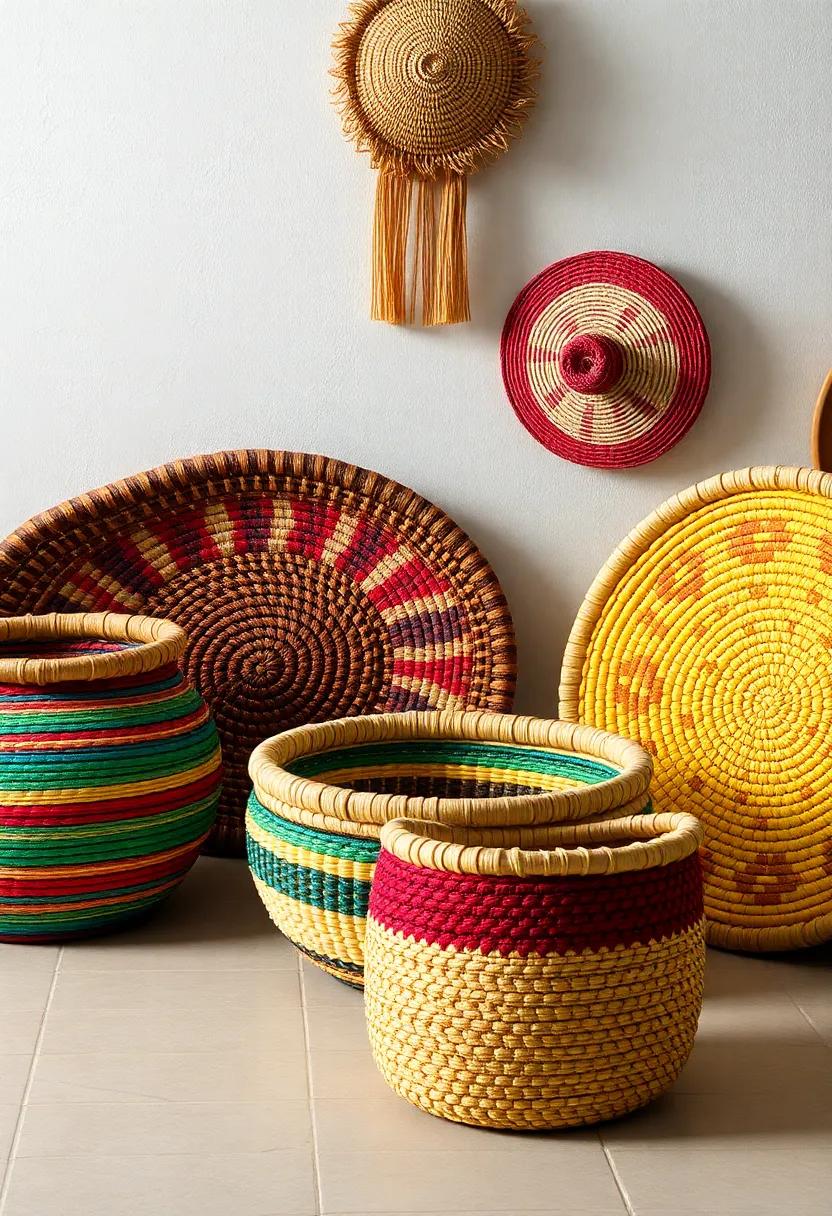
The Raramuri people, also known as the Tarahumara, are renowned for their intricate weaving techniques, which have been passed down through generations. These baskets, primarily made from natural fibers such as pine needles and yucca leaves, showcase the rich cultural heritage and deep connection to their environment that the Tarahumara hold dear. Each basket is a manifestation of practicality and art, serving purposes ranging from storage to ritual use within their communities. The vibrant colors, achieved using natural dyes from local plants, illustrate not only their craftsmanship but also their storytelling traditions, effectively encapsulating the essence of Raramuri spirituality and daily life through every weave and stitch.
Central to the Raramuri’s basket-making practice is the emphasis on sustainability and resilience. These artisans engage in a meticulous process that reflects their respect for nature, ensuring that every material used is harvested responsibly.Each item is crafted solely by hand, resulting in a unique piece that tells the story of the land it came from. Here are some significant aspects that capture the essence of Raramuri basket weaving:
| Aspect | Description |
|---|---|
| Materials | Pine needles, yucca leaves, and natural dyes |
| Techniques | Coiling, braiding, and weaving |
| Uses | Storage, ceremonial purposes, and decorative displays |
| Symbolism | Connection to nature, spirituality, and community |
“Los Andes Baskets: A Tribute to the Fusion of Art and Utility in Andean Culture”
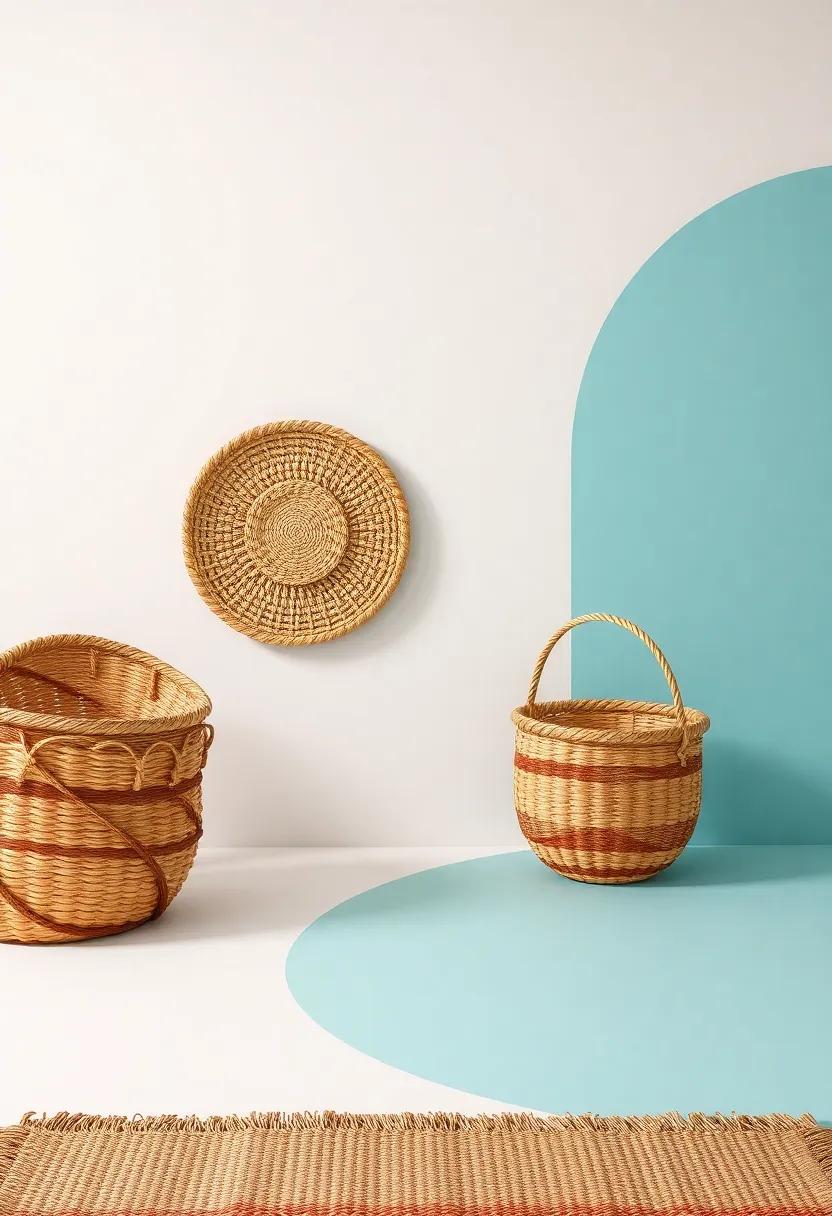
In the majestic region of the Andes, vibrant cultures have woven stories into every strand of their traditional baskets.These creations are not merely functional but are also a canvas for artistic expression, embodying the essence of Andean life.The baskets, primarily crafted from durable natural materials such as reeds, jute, and palm fibers, showcase geographic diversity and cultural identity through intricate patterns and bold colors. Each piece reflects the artisan’s skill and hands-on heritage, inviting observers to appreciate the deep-rooted significance of these everyday objects.
Among the most notable styles, the Chilean “canasto” stands out with its stunning geometric designs that are inspired by the surrounding landscapes. Meanwhile, the Ecuadorian “sombrero de paja toquilla” not only serves as a fashionable accessory but is also functional in holding various goods. In Bolivia, the colorful “wiphala” patterns are celebrated, representing the culture’s commitment to harmony and balance. These baskets transcend utility—they are a tribute to a communal mindset, celebrating the threads that link people to their heritage and to each other.
| Basket Type | Origin | Material | Significance |
|---|---|---|---|
| Canasto | Chile | Reed | Geometric beauty derived from nature |
| Sombrero de Paja Toquilla | Ecuador | Palm fiber | Symbol of fashion and function |
| wiphala | Bolivia | Natural Dyes | Representation of harmony |
“Huichol Beaded Baskets: A Kaleidoscope of Colors Reflecting Spirituality and Nature”
The vibrant world of Huichol beaded baskets showcases an extraordinary blend of artistry and tradition, rooted in the rich tapestry of the Huichol people’s cultural heritage. Each basket is meticulously crafted, featuring intricate patterns and luminous colors that mirror the landscape surrounding the artisans. The use of beads transforms these baskets into three-dimensional canvases,with designs frequently enough inspired by nature,spirituality,and the cosmos. From bright yellows and reds symbolizing life and energy to deep blues representing the sky and waters, every hue is thoughtfully chosen to create a dynamic interplay reflecting the essence of the Huichol’s worldview.
These beaded baskets serve much more than decorative purposes; they embody ceremonial significance and are often used in rituals to honor the connection between the spiritual and natural realms. Typically crafted from sturdy materials such as the cactus, straw, or palm fronds, the baskets are then embellished with colorful beads and threads, each stitch infused with intention and care. The spiritual motifs found within the designs—like animals, plants, and geometrical shapes—tell stories of creation, community, and ancestral wisdom, inviting observers to appreciate not only their beauty but the deep-rooted significance behind each piece. This artisanal practice is a vibrant display of cultural identity, where every basket connects the past with the present, encapsulating the heart and soul of the Huichol people.
“Chinchorro Baskets: Functional Craftsmanship Inspired by 7,000-Year-Old Traditions”
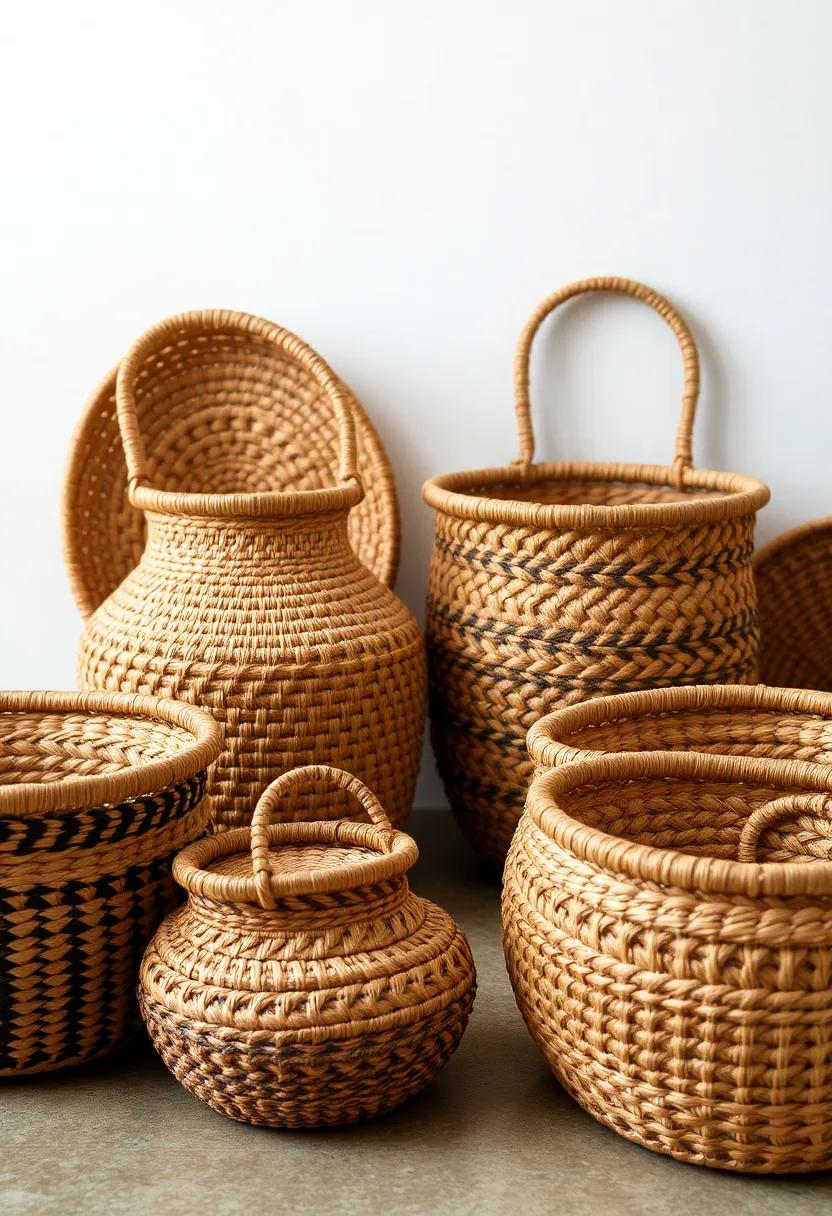
The ancient Chinchorro people of present-day Chile and peru crafted stunning baskets that serve as a testament to their incredible artistry and functionality. Dating back over 7,000 years, these baskets are meticulously woven from local grasses, reeds, and fibers, showcasing extraordinary skill and creativity. Each piece is not only designed to hold items but also to commemorate the rich cultural heritage of the Chinchorro community.Today, artisans continue to draw inspiration from these ancient traditions, honoring the past while creating baskets that are both practical and visually striking.
What sets Chinchorro baskets apart is their intricate designs and adaptability. These versatile creations can be used for a variety of purposes, from carrying daily goods to serving as decorative art pieces. Modern weavers incorporate contemporary colors and patterns while maintaining age-old techniques, ensuring that the spirit of the Chinchorro craftsmanship endures. Here are some defining features of these remarkable baskets:
| characteristics | Details |
|---|---|
| Materials | Grasses, reeds, and natural fibers |
| Techniques | Traditional weaving methods passed down through generations |
| Designs | Intricate patterns representing cultural stories |
| Uses | Functional storage to decorative art |
“Bandeja Basket: An Ethereal Craft Combining Natural Materials with Stunning Utility”
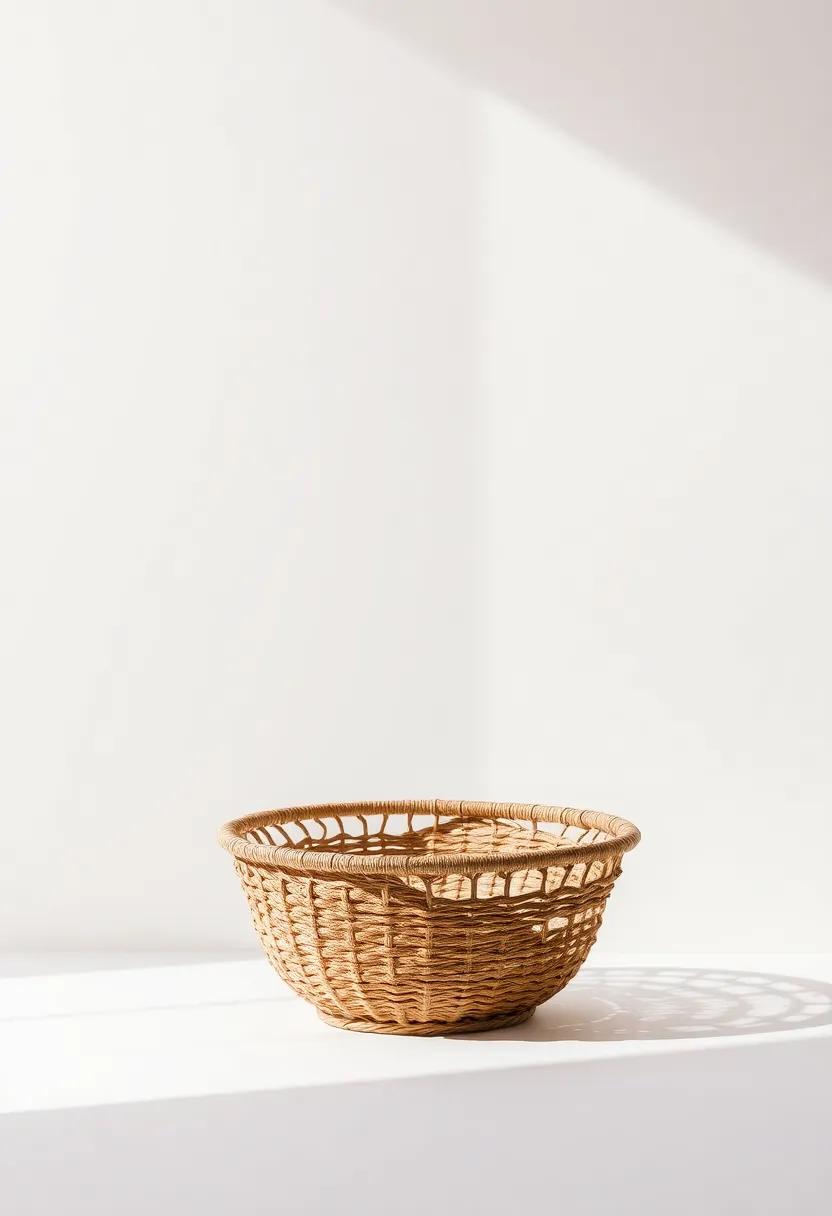
Crafted with a deep reverence for nature, the Bandeja basket showcases a unique fusion of aesthetics and functionality, making it a celebrated example of South American craftsmanship. These baskets, often intricately woven from natural fibers like palm fronds, sisal, or bamboo, are characterized by their 🍃 organic shapes and vibrant patterns, often reflecting the landscapes from which the materials are sourced. Each piece tells a story, as artisans imbue their work with local traditions and cultural symbolism, highlighting not just the utility of the basket, but also its role as a functional piece of art in everyday life.
The versatility of Bandeja baskets is commendable; they serve various purposes—from organizing household items to enhancing home decor. With a wide assortment of sizes and designs, these baskets can easily fit into any setting. Ideal for storing everything from blankets to toys, they seamlessly blend style with utility. In addition, the eco-friendly materials promote sustainability, elevating these baskets from mere storage items to eco-conscious lifestyle choices. Their unique textures and colors not only brighten a space but also provide a tactile connection to the earth, making every Bandeja basket a cherished posession.
“Boro Baskets: Love letter to Nature, Weaving Sustainability within Every Piece”
Among the myriad of traditional South American crafts, few resonate as deeply with nature as the Boro baskets. Each piece is not merely a product but a story woven from the fibers of local plants, embodying the spirit of sustainability and the respect for resources that these artisans hold dear. The delicate interlacing of vibrant colors and textures reflects the biodiversity of the continent, creating a visual tapestry that speaks to both the earth and its people. Every basket serves a dual purpose—functional yet artful,each piece honors its origins by utilizing eco-friendly materials,reducing waste,and encouraging responsible craftsmanship.
In the crafting of these baskets, artisans employ techniques passed down through generations, integrating their cultural heritage with modern environmental consciousness. The baskets are often made from materials like jute, seagrass, or other organic fibers, which further enhance their positive impact on the environment. Here are some iconic characteristics that define Boro baskets:
- Natural Dyes: Colors are derived from local plants,ensuring that every piece is unique.
- Versatile designs: From storage solutions to decorative items, each basket serves multiple purposes.
- Community Craftsmanship: Artisans often work in groups, fostering community ties while promoting sustainable practices.
| Type of Fiber | Functionality | Environmental Benefit |
|---|---|---|
| Jute | Storage Baskets | Biodegradable |
| Seagrass | Decorative Pieces | Low Water Consumption |
| Willow | Utility Baskets | Renewable Resource |
“Taino-San Basket: A Study in Cultural Resilience and Artistic Expression from the Caribbean”
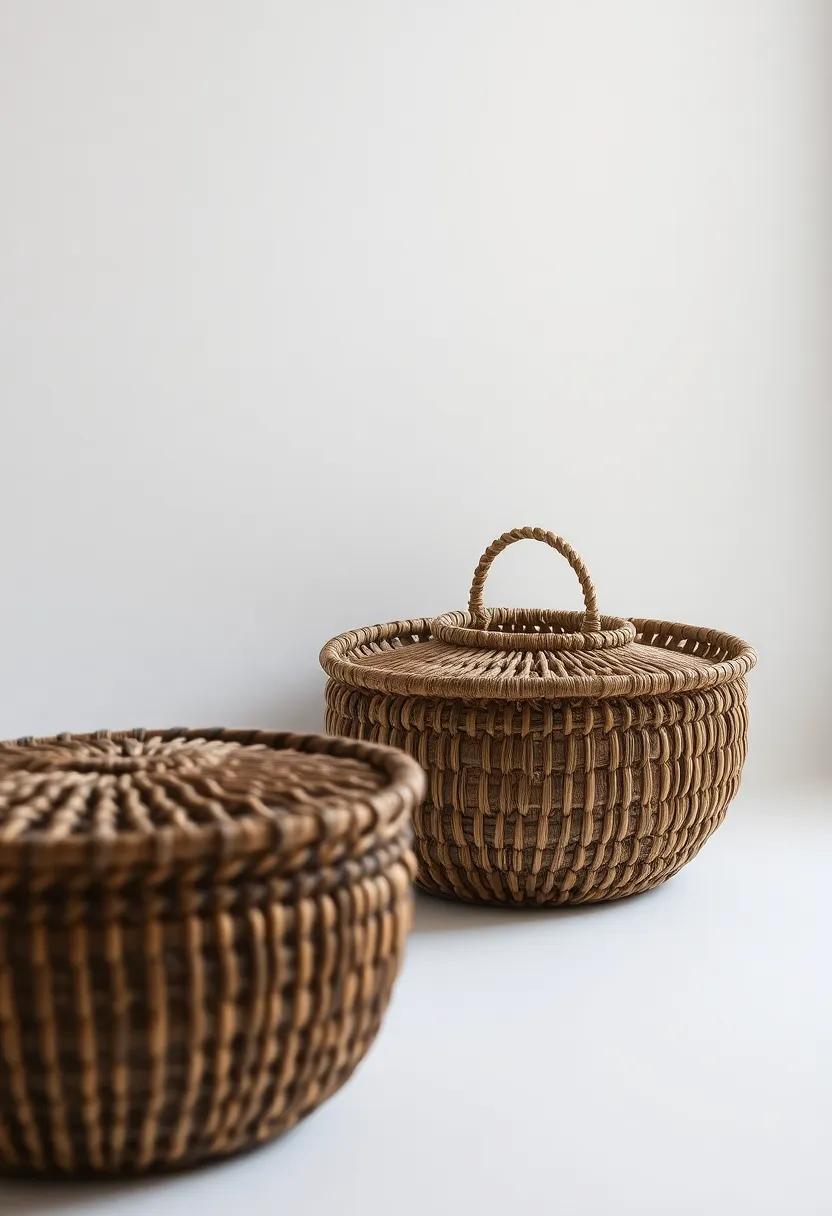
The Taino-san basket serves as a profound emblem of cultural resilience among the Indigenous Taino people of the Caribbean. Traditionally handcrafted from natural materials such as palm fronds, reeds, and fibers, these baskets exemplify a harmonious relationship between nature and craftsmanship. The intricate designs often reflect the rich tapestry of Taino mythology and daily life, showcasing motifs that echo ancient rituals and community values. By employing techniques passed down through generations, artisans preserve not only their artistic heritage but also the stories and traditions that define their identity amidst the modern world.
Each basket tells a story, encapsulating the essence of community, sustainability, and creative expression.Key characteristics include:
- Use of Indigenous Materials: Sourced locally from the environment, emphasizing sustainability.
- Symbolic Designs: Patterns frequently enough represent elements of nature, spirituality, and Taino folklore.
- Functional art: These baskets serve practical purposes, from carrying goods to ceremonial uses, blending utility with elegance.
- Community Workshops: Handcrafted in communal settings, fostering collaboration and cultural sharing among artisans.
| Feature | description |
|---|---|
| Materials | Natural fibers,primarily from palm and reeds. |
| Color Palette | Earth tones inspired by the Caribbean landscape. |
| Artistic Techniques | Weaving methods passed through generations. |
| Cultural Significance | Represents a fusion of artistry and ancestral heritage. |
“Mestizo Baskets: A Melting Pot of Colors and Crafting Techniques Across Cultures”
The vibrant tapestry of Mestizo baskets showcases a beautiful fusion of indigenous artistry and colonial techniques, reflecting a unique cultural identity. These baskets are crafted using a diverse palette derived from local plants, pigments, and dyes, resulting in an explosion of colors that narrate stories from generations past. The weaving techniques vary significantly, often incorporating methods from both African and indigenous traditions, blending functionality with aesthetics. Key characteristics that define these intricate pieces include:
- Materials: Plant fibers, palm fronds, and vibrant dyes
- Patterns: Geometric designs, nature motifs, and symbolisms
- Uses: Everyday storage, ceremonial purposes, and decorative display
in the craft of mestizo baskets, artisans weave not just fibers but also cultural narratives. Each basket serves as a canvas that tells tales of community, tradition, and innovation while bridging the gap between various cultural influences. Collaborative efforts among artisans often lead to the creation of hybrid styles, where one can witness diverse colors and weaving methods coalesce into a singular masterpiece. Here’s a glimpse at the different weaving techniques celebrated in Mestizo baskets:
| Weaving Technique | Description |
|---|---|
| Coiling | A base is formed and coils of material are stitched around it. |
| Twining | Two or more strands are interlaced to create patterns. |
| Plaiting | Flat strips are woven together in a crisscross fashion. |
In Conclusion
As we wrap up our exploration of these 29 unique traditional South American woven baskets, it’s clear that each piece tells a story—woven together from threads of culture, heritage, and artistry. From the intricate designs of the Andes to the vibrant colors of the Amazon, these baskets are more than mere objects; they are reflections of the communities and traditions that have shaped them.
Whether you’re a collector, an enthusiast, or simply someone with an appreciation for craftsmanship, these baskets offer a glimpse into the rich tapestry of South American life. As you seek to incorporate these remarkable pieces into your home or gift them to loved ones, remember the narratives and skills embedded within each weave.
So the next time you admire a woven basket,take a moment to consider the artisans behind it,their dedication,and the mirrored traditions they represent. Thank you for joining us on this journey through South America’s woven wonders. May you find inspiration in their beauty and significance, and perhaps even a piece that resonates with your own story. Happy exploring!
As an Amazon Associate I earn from qualifying purchases.



